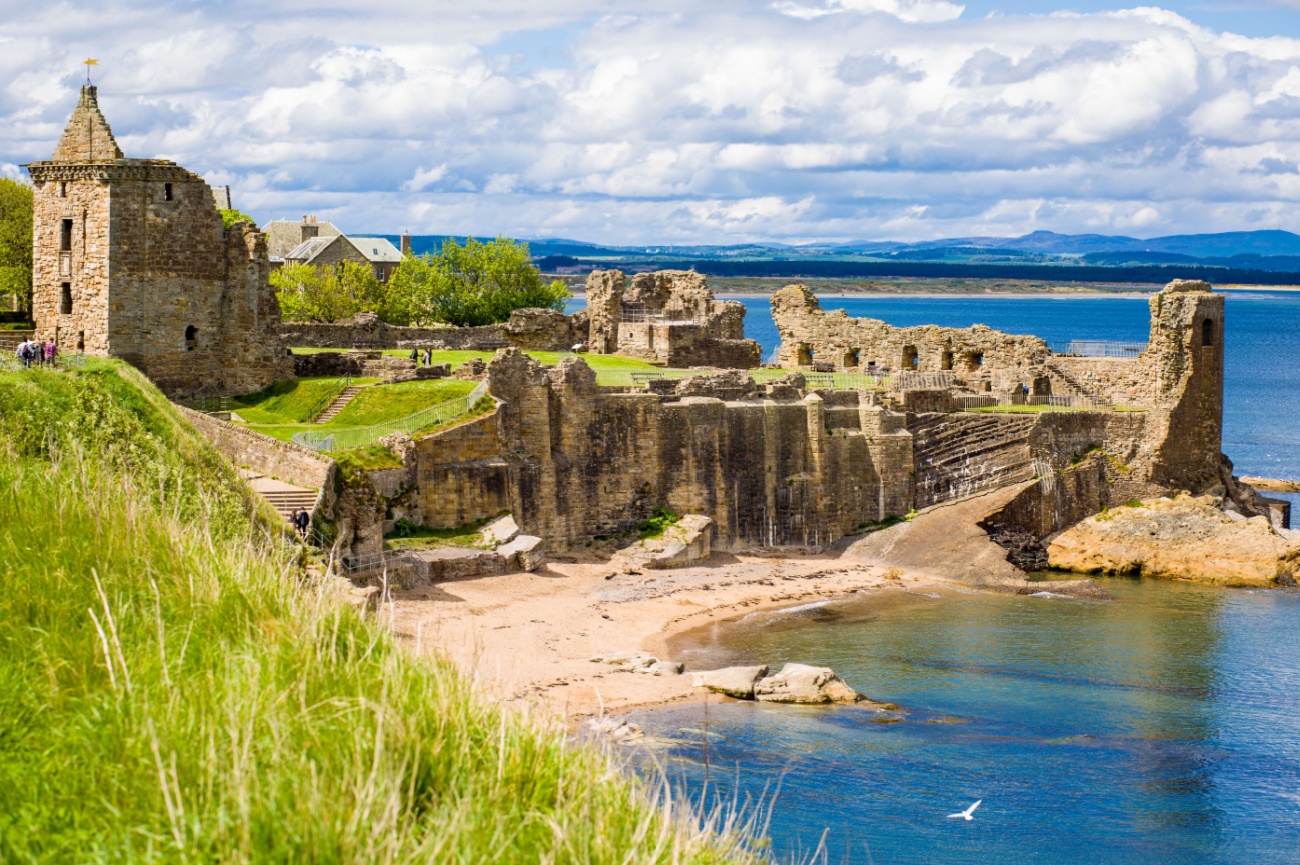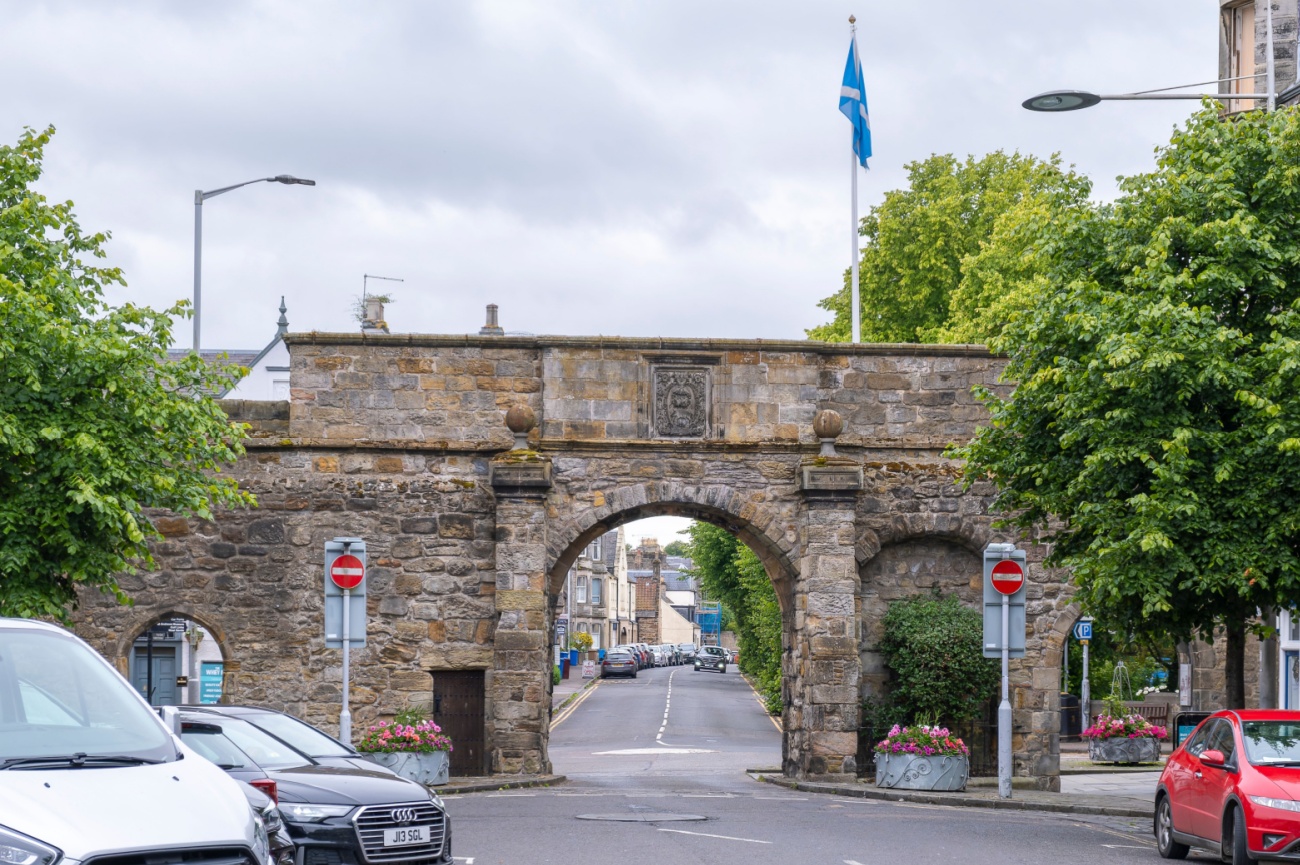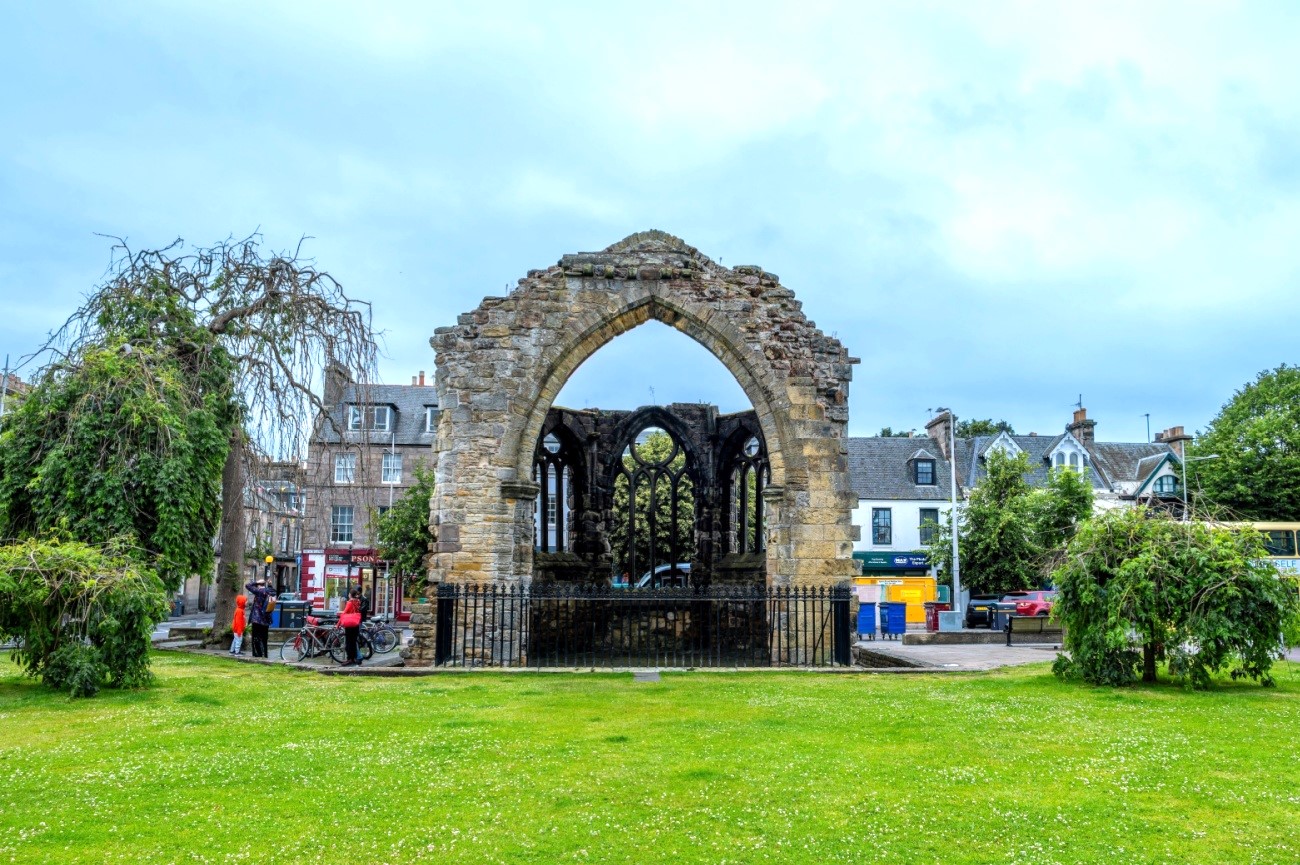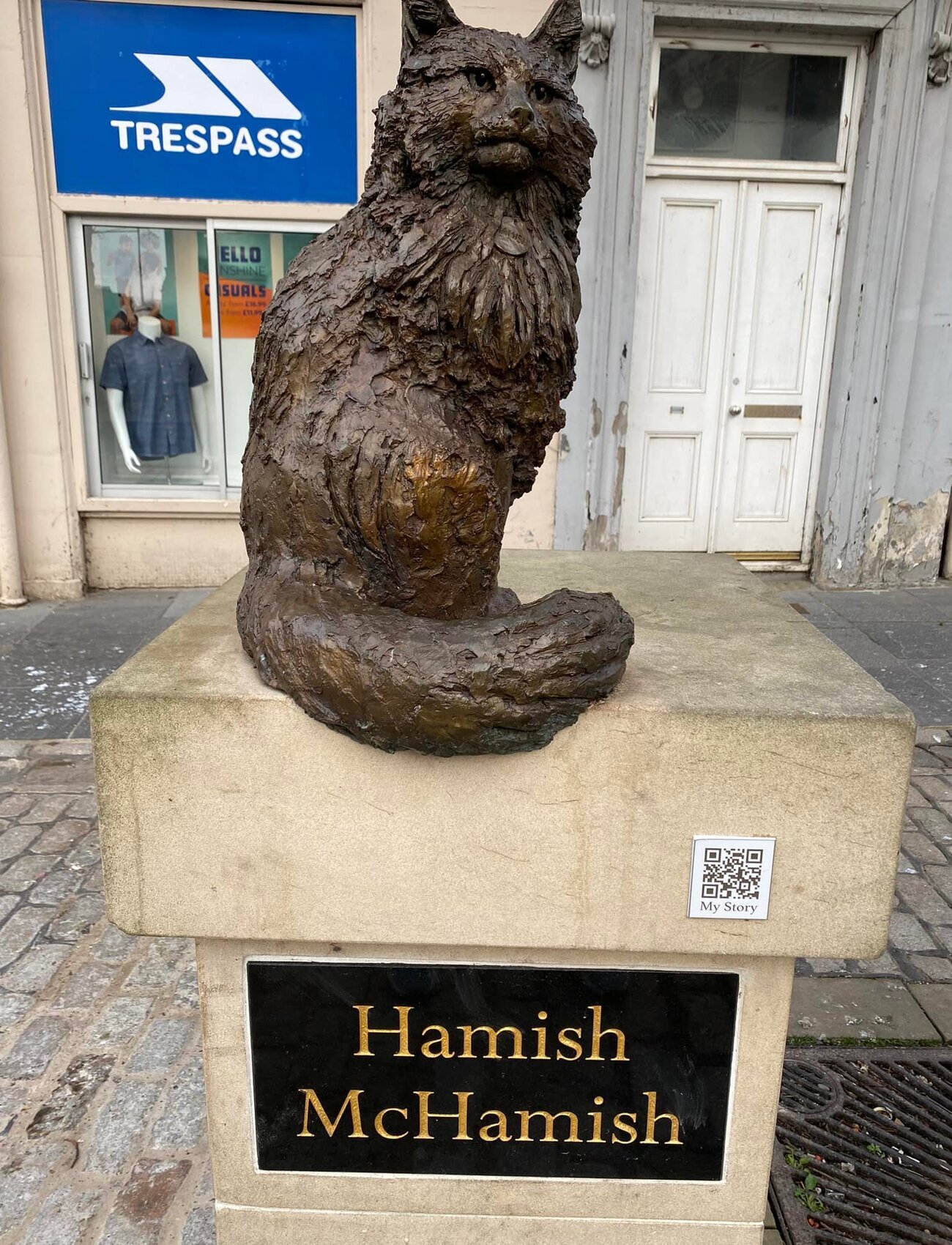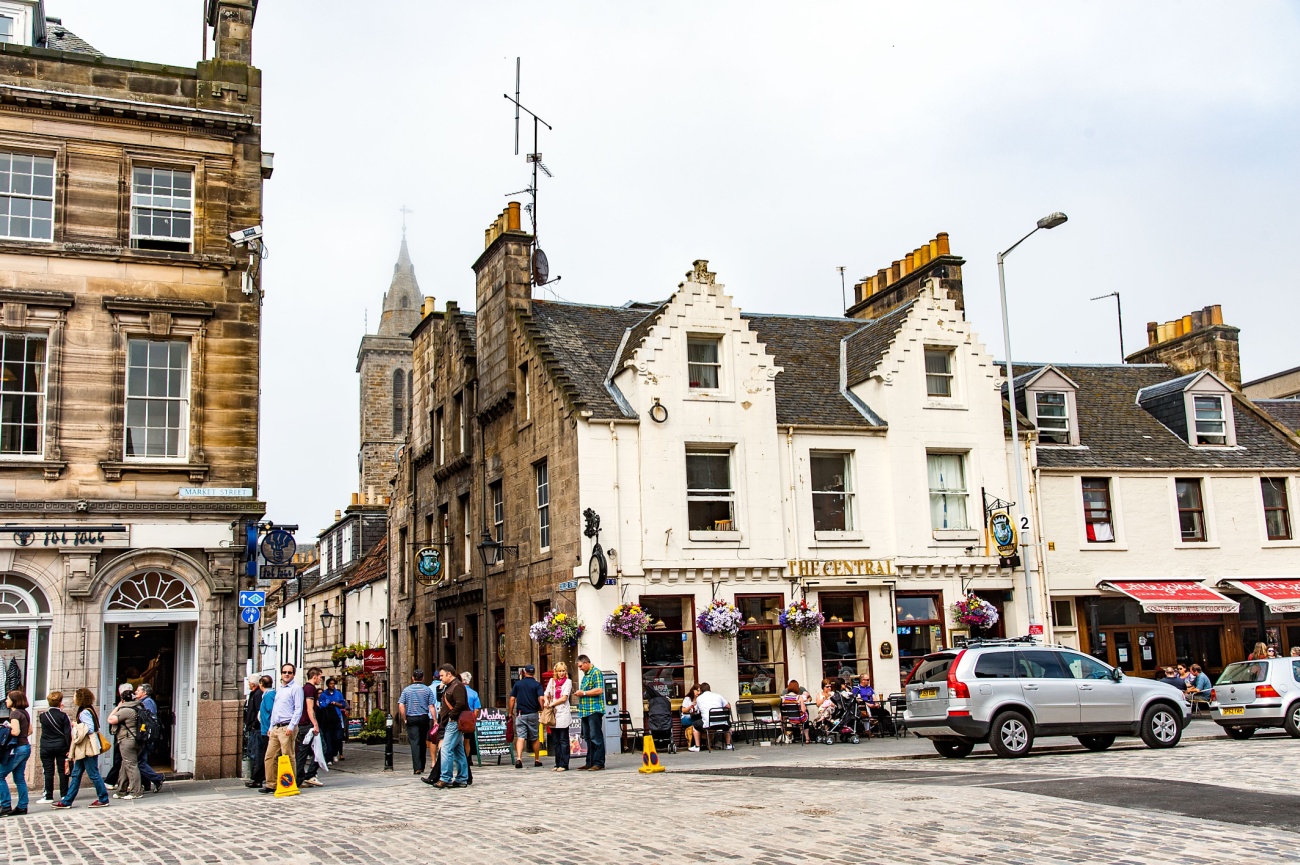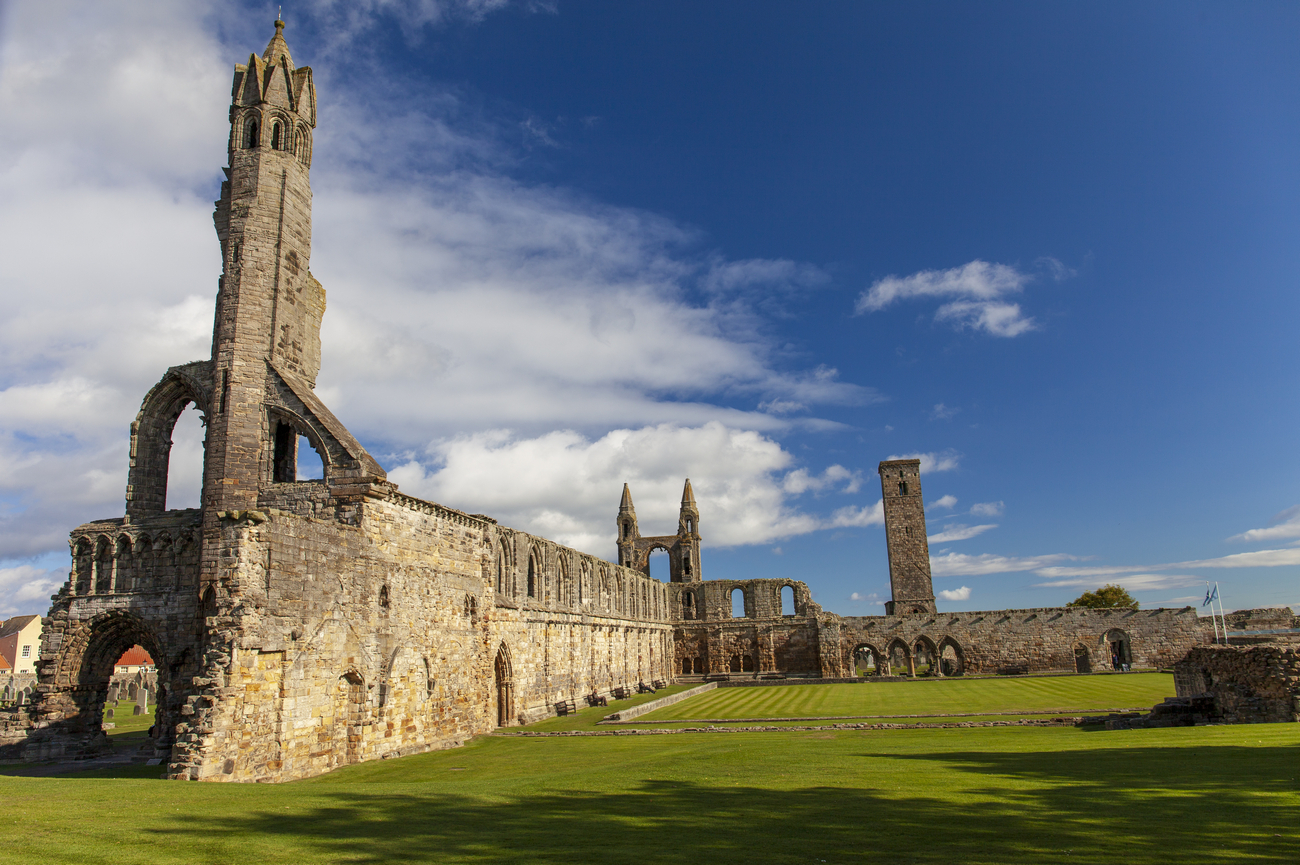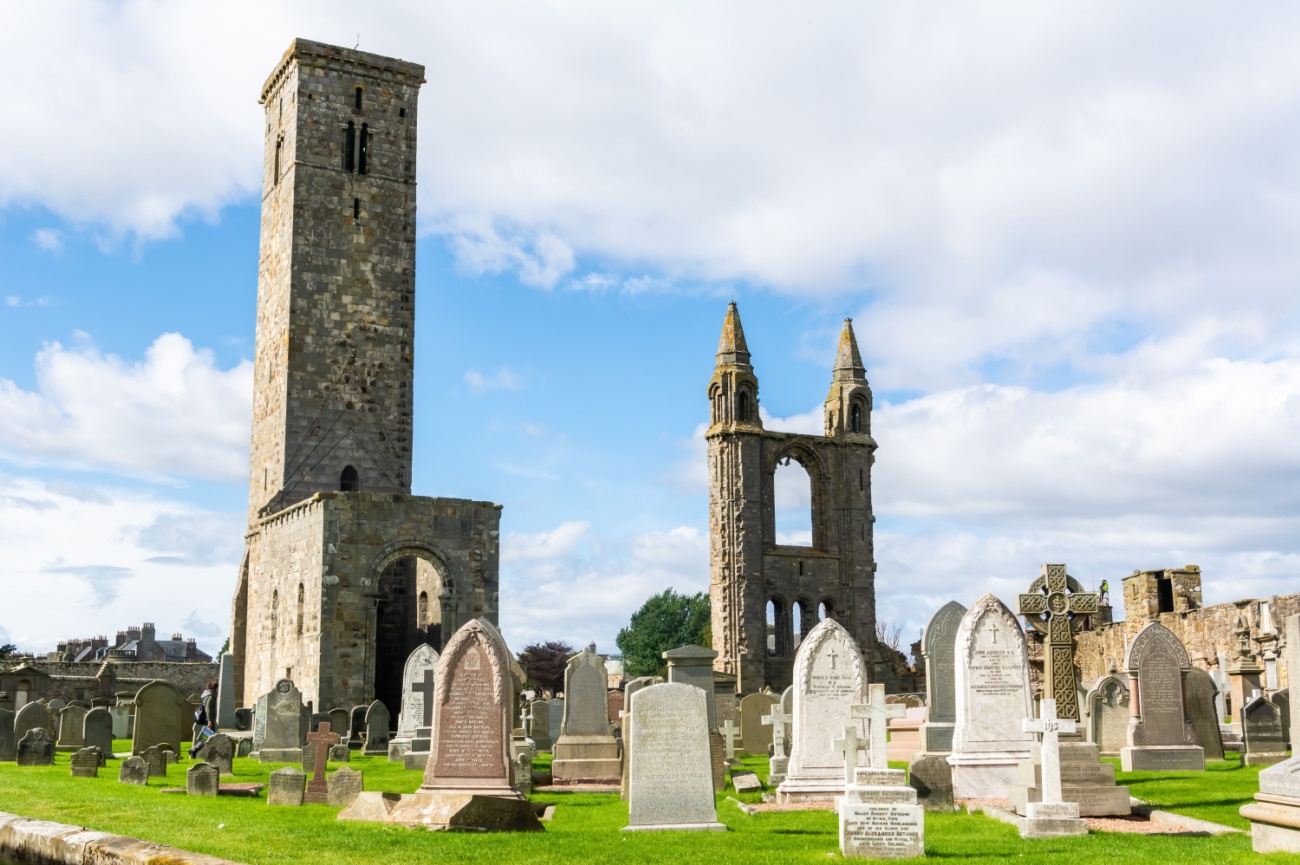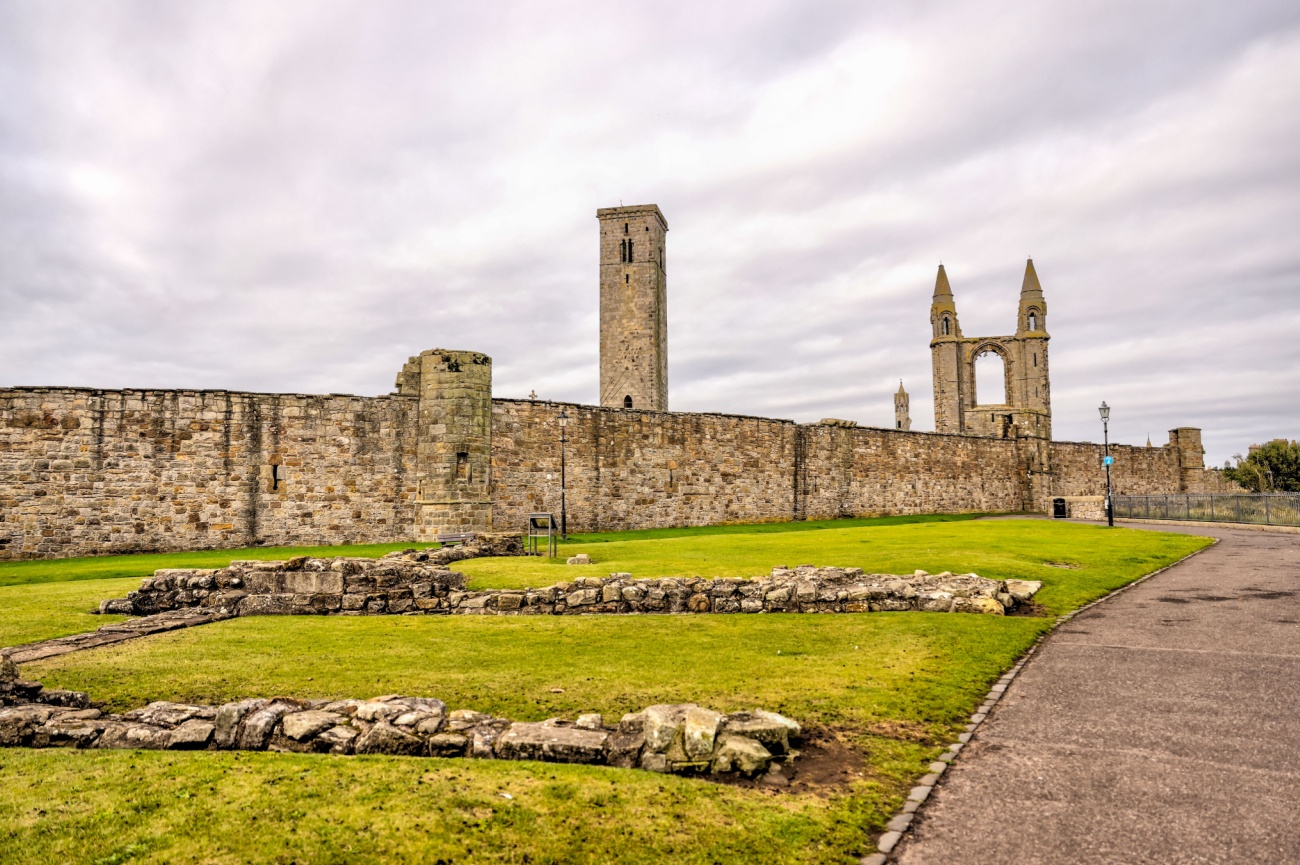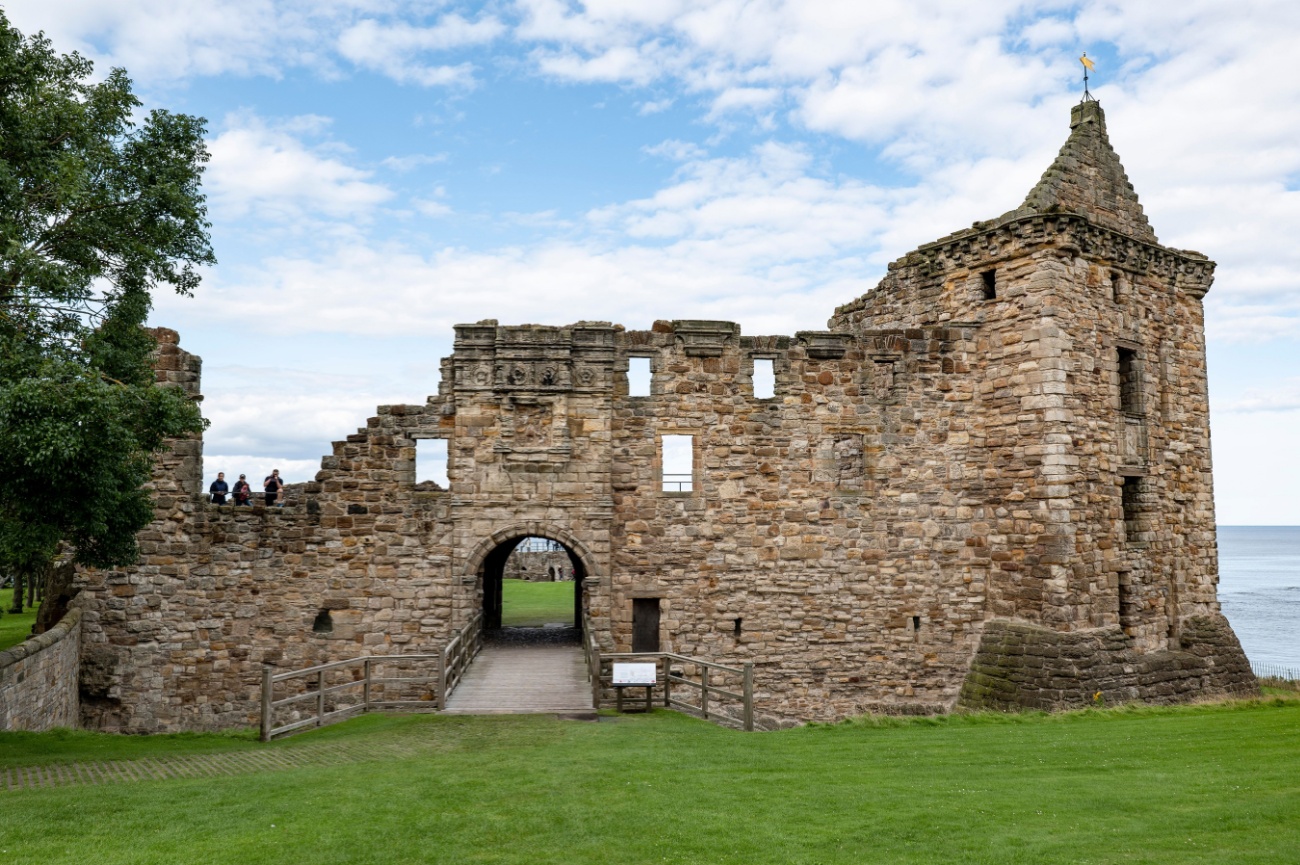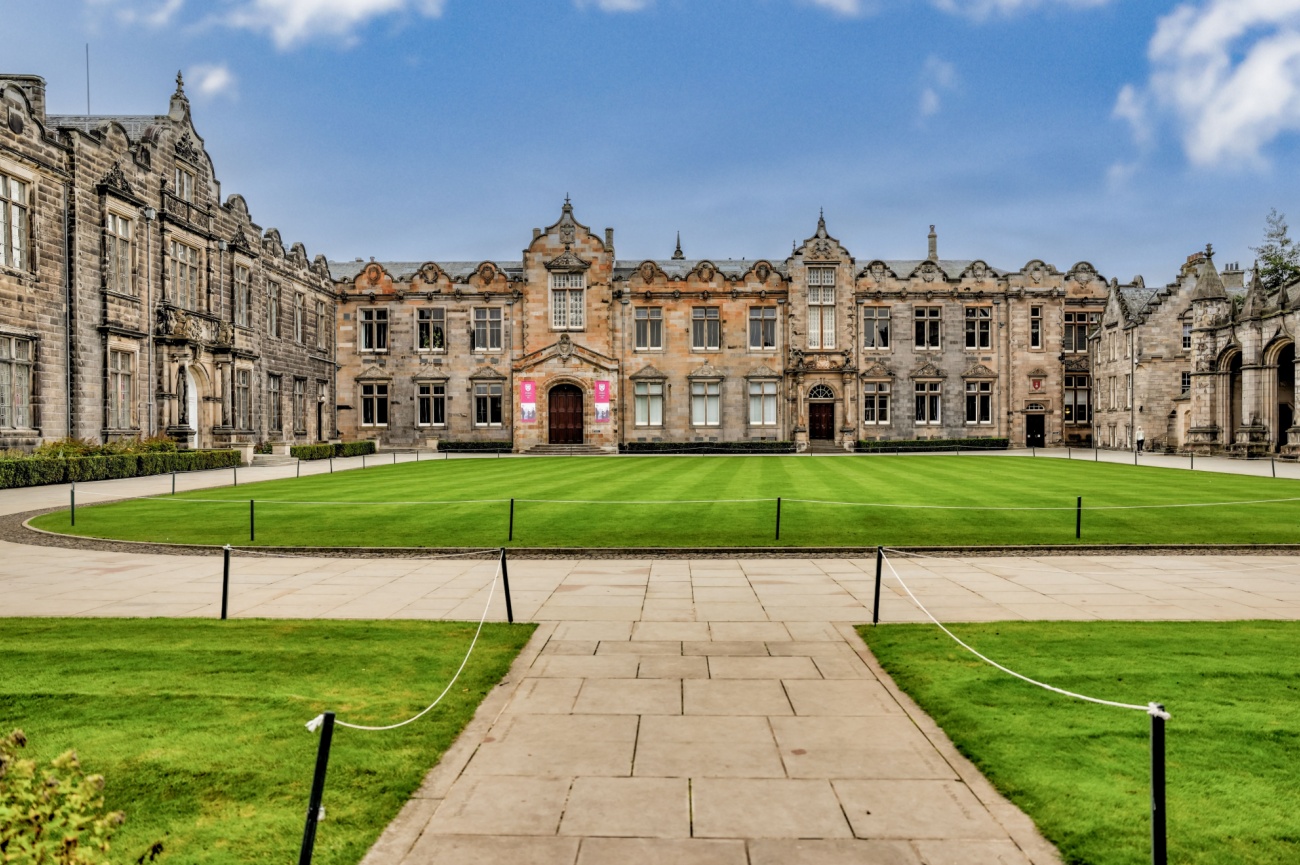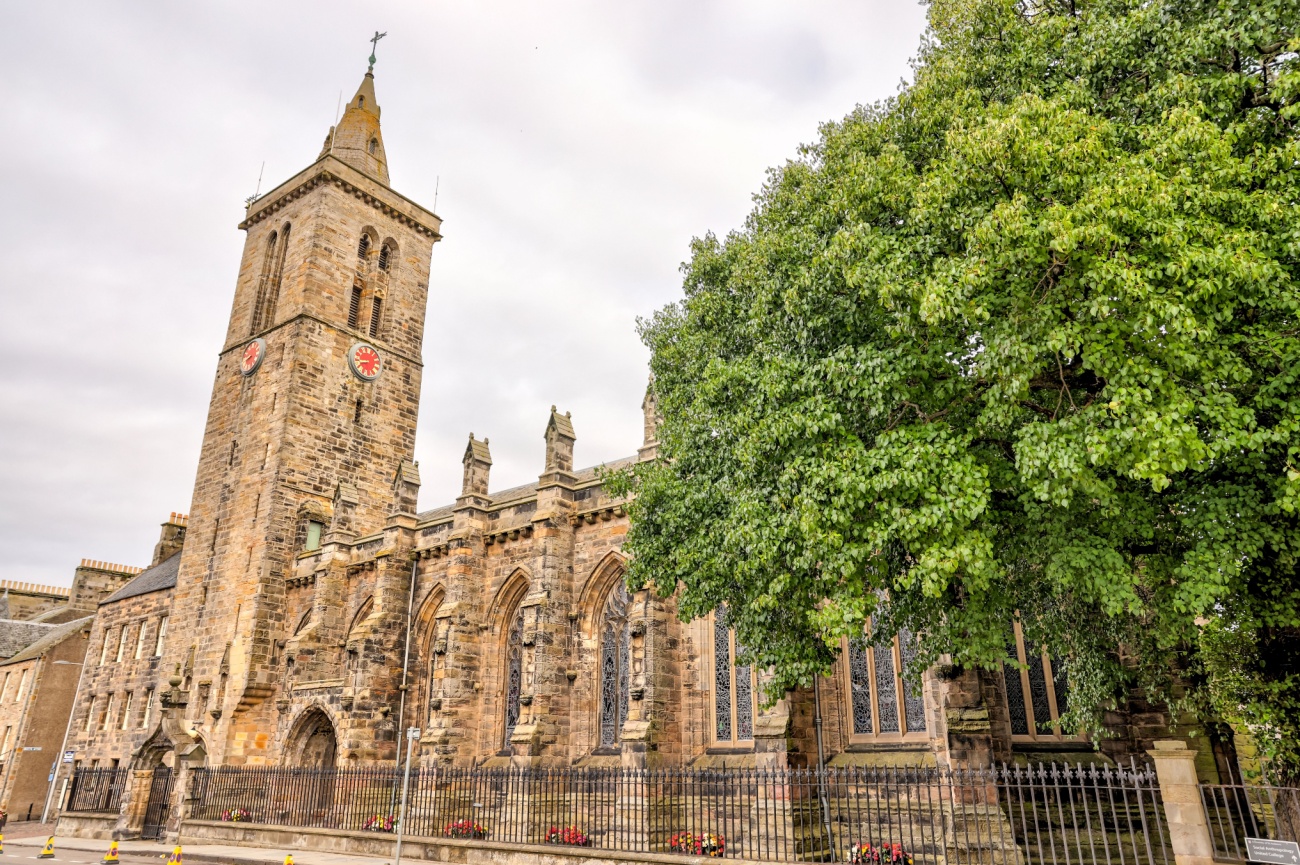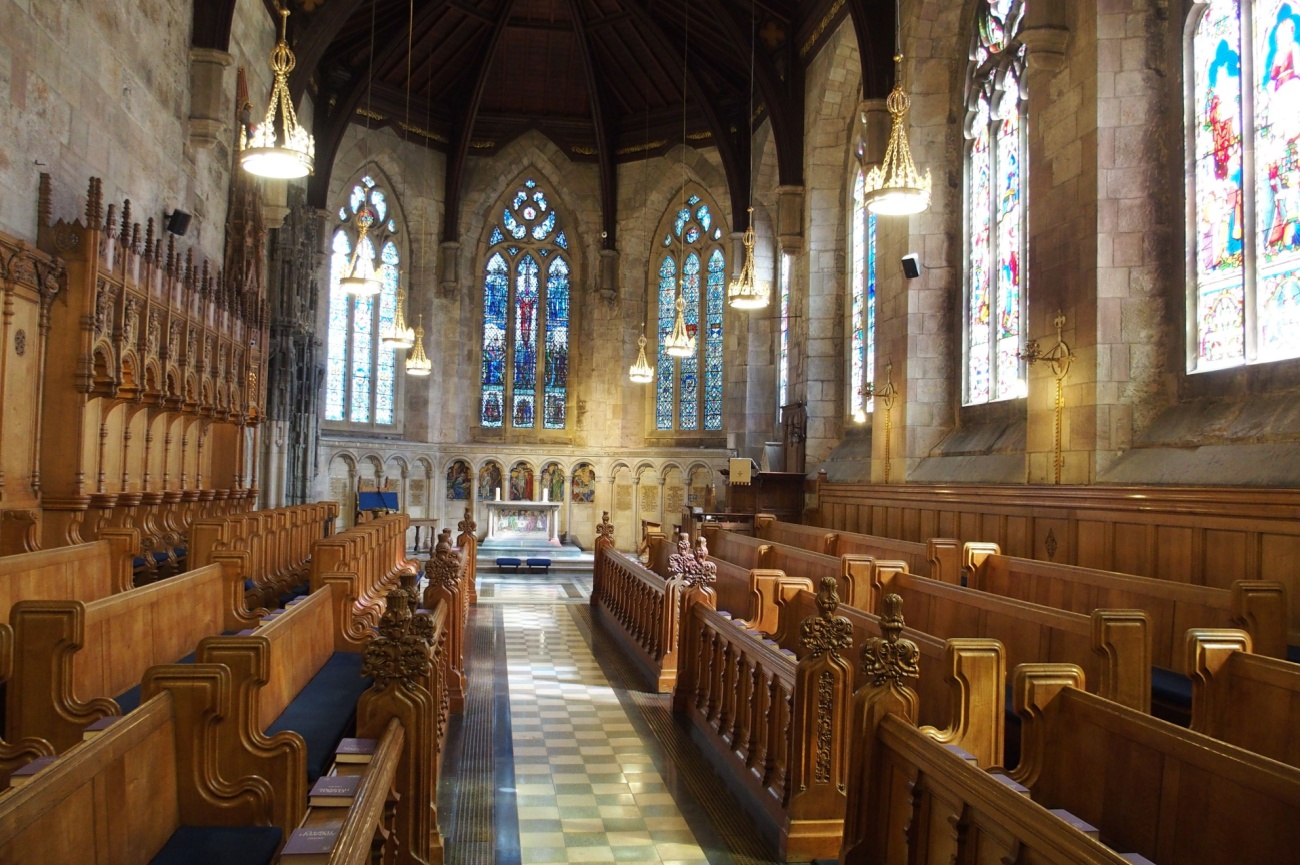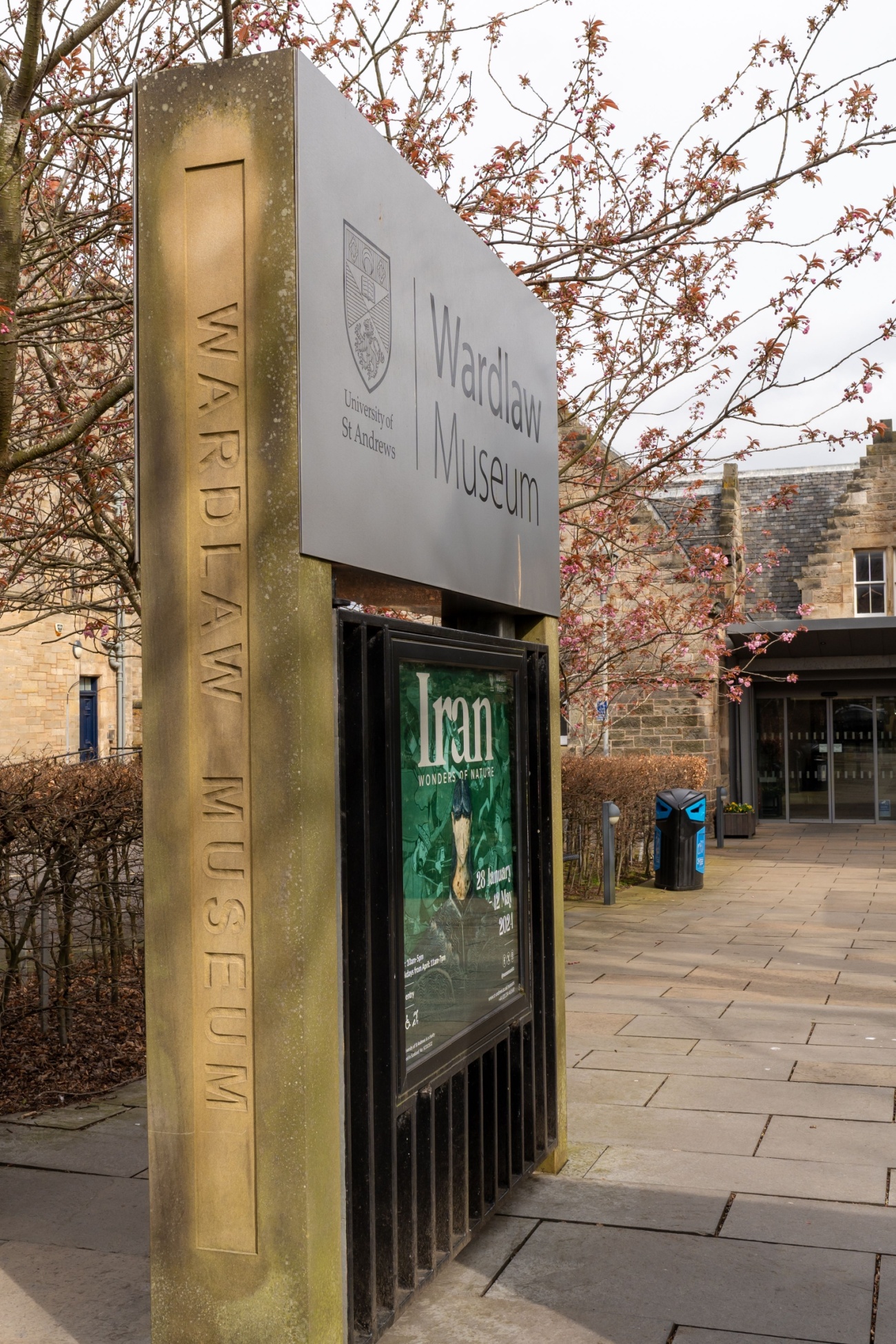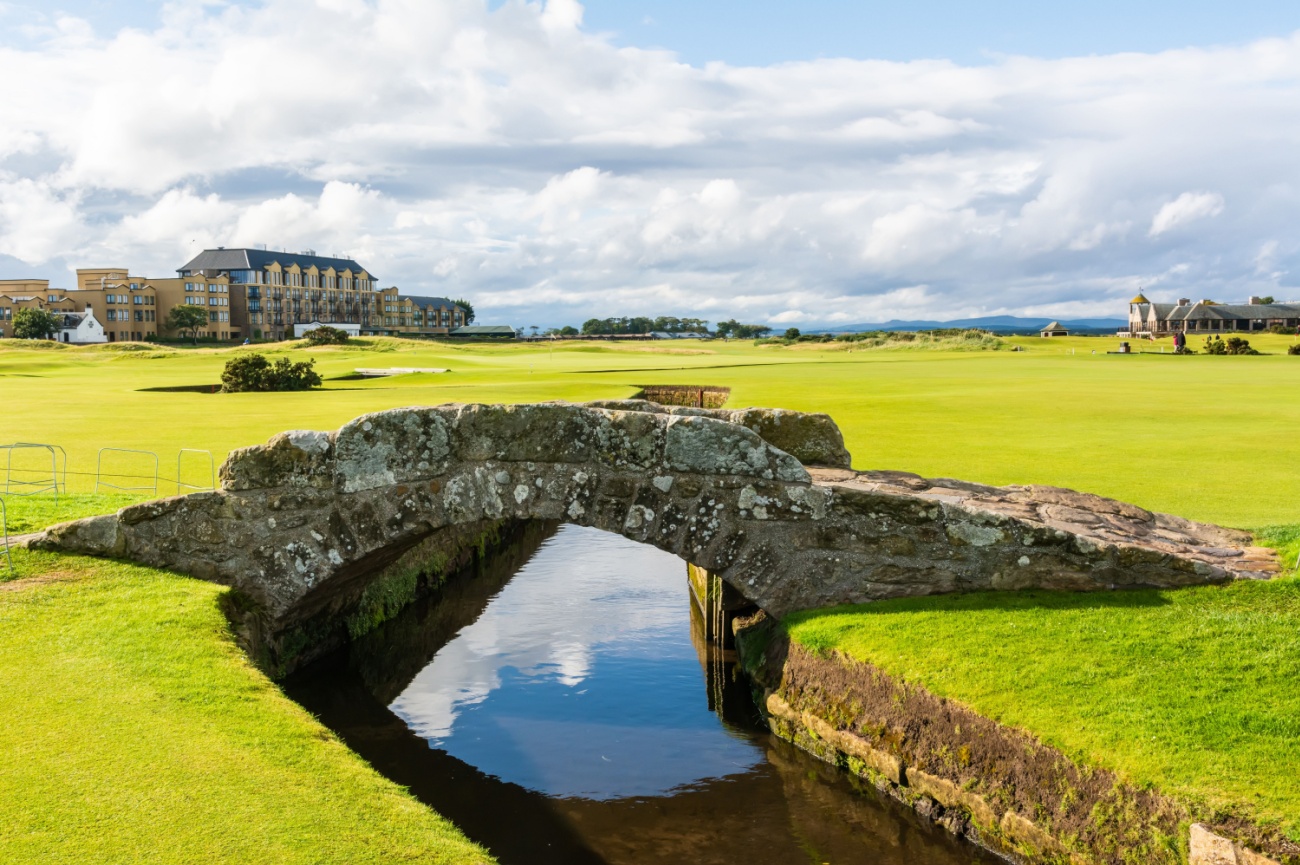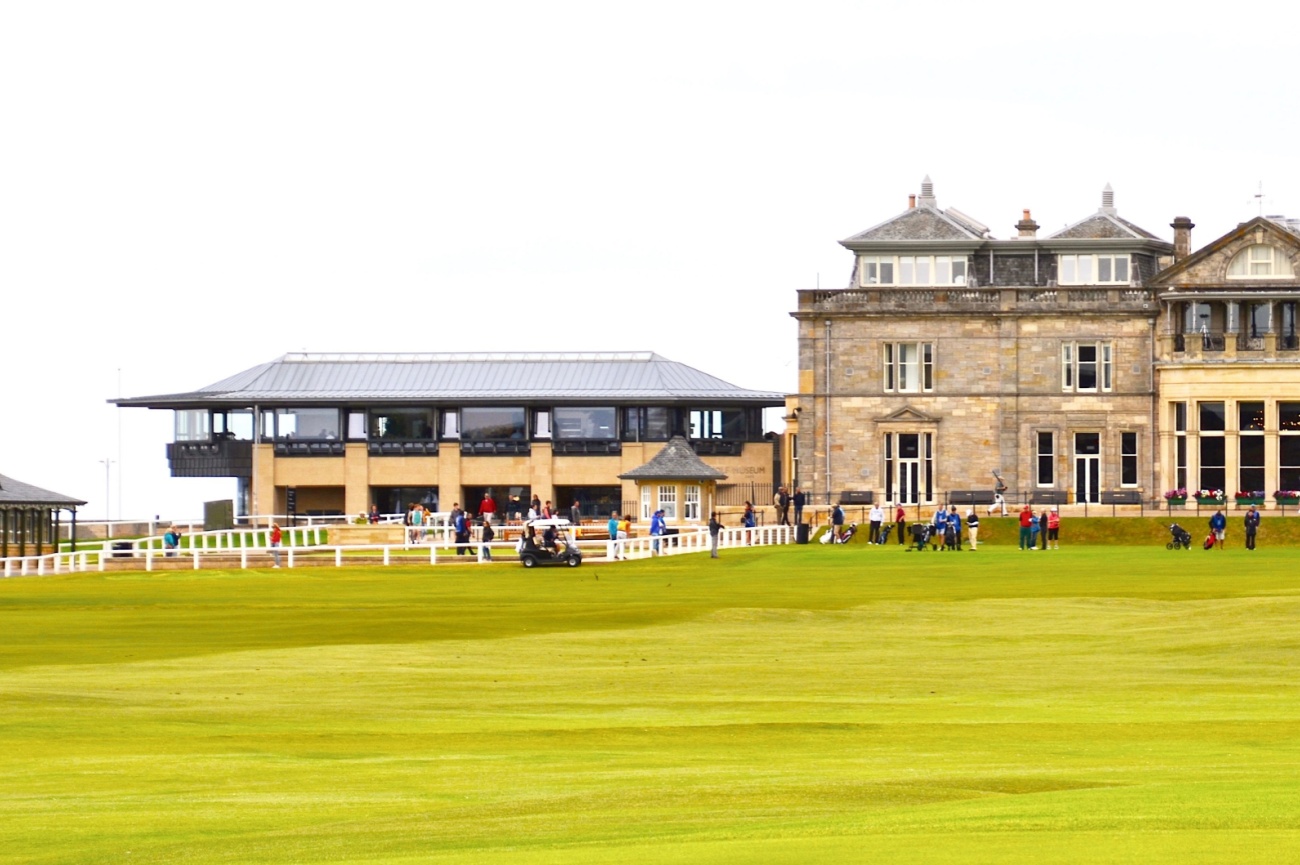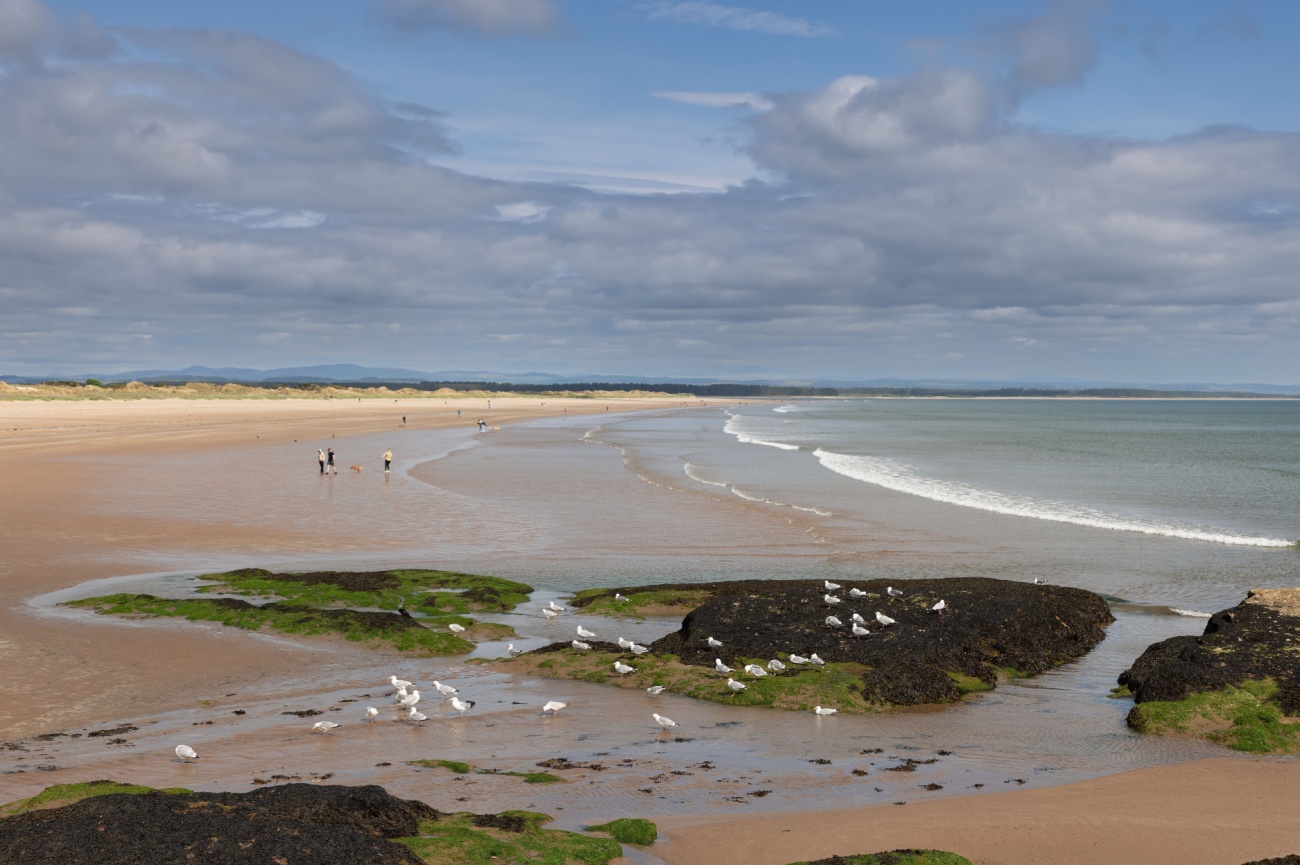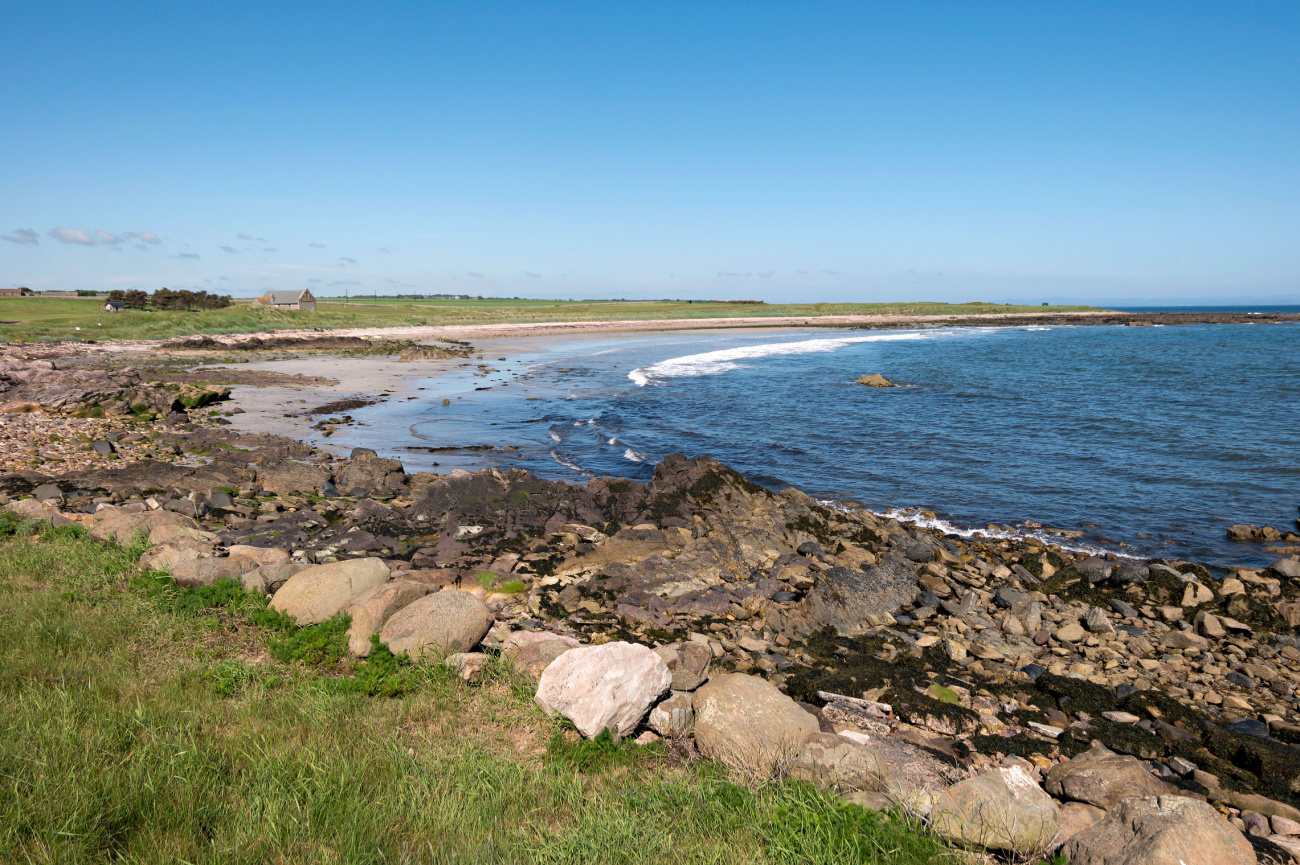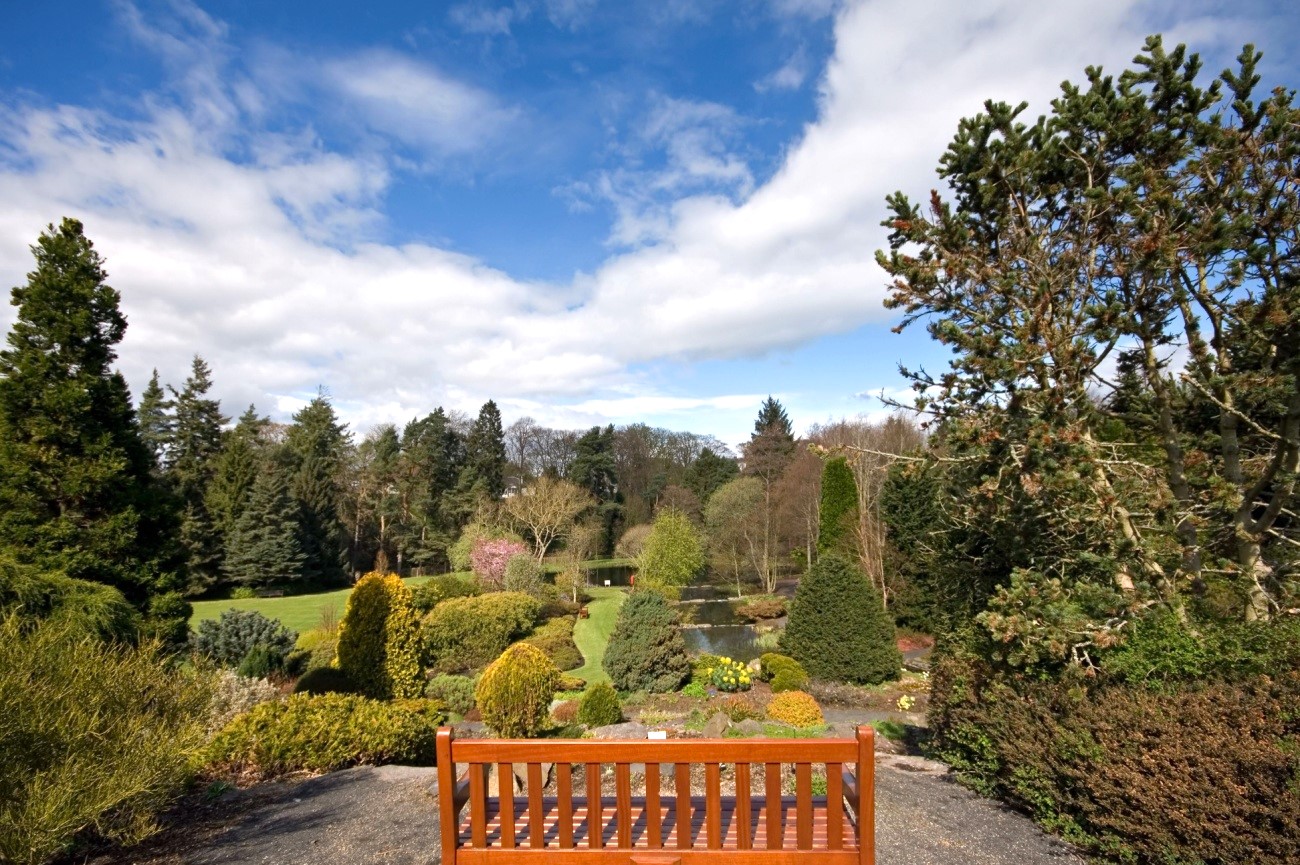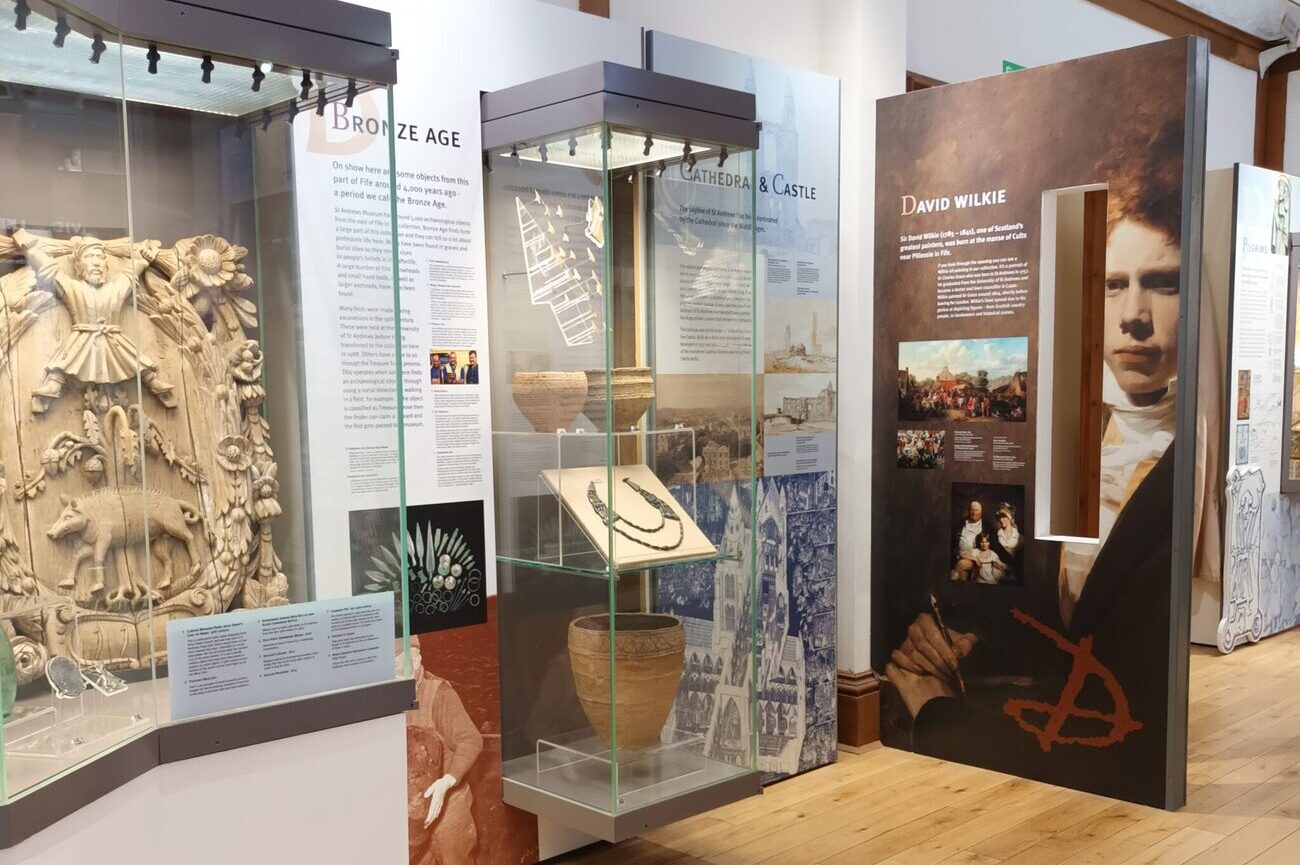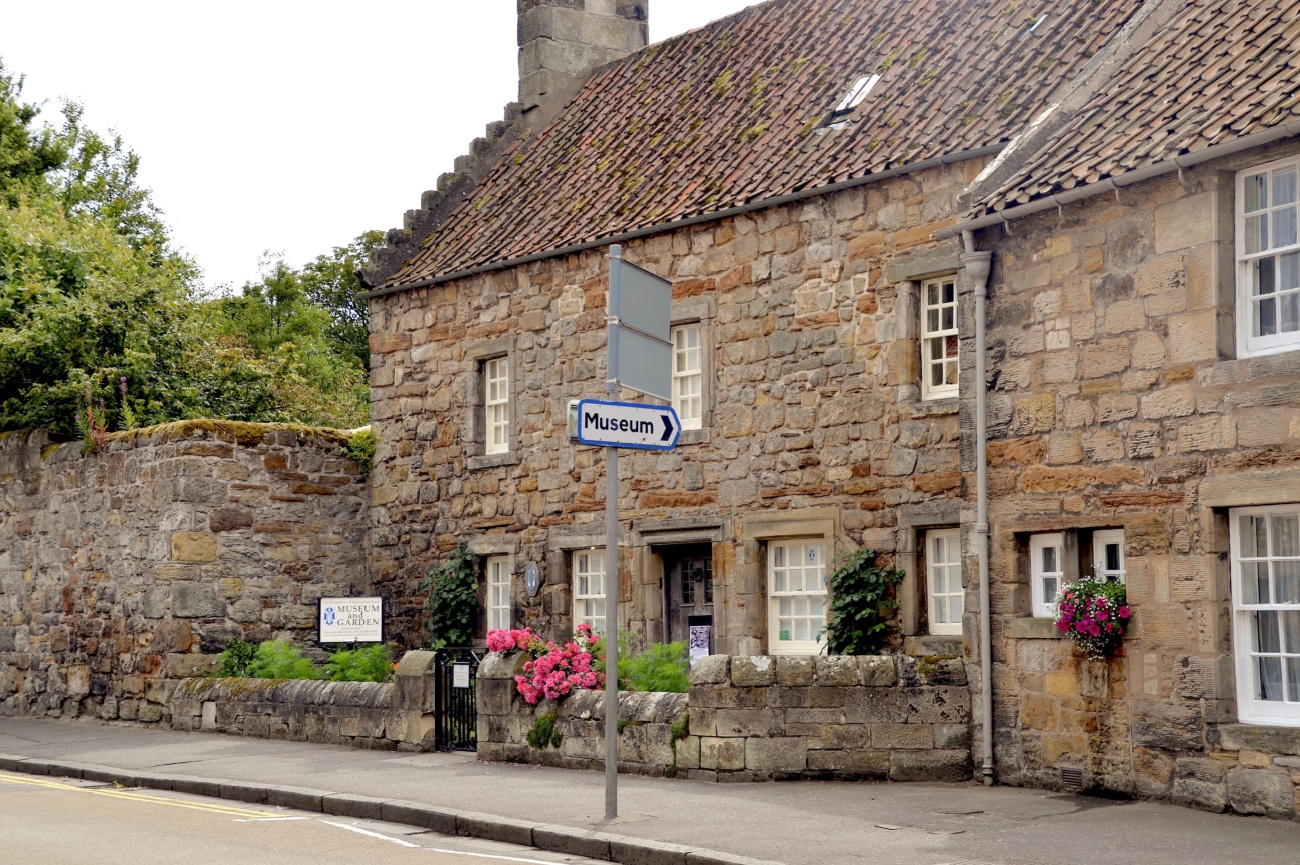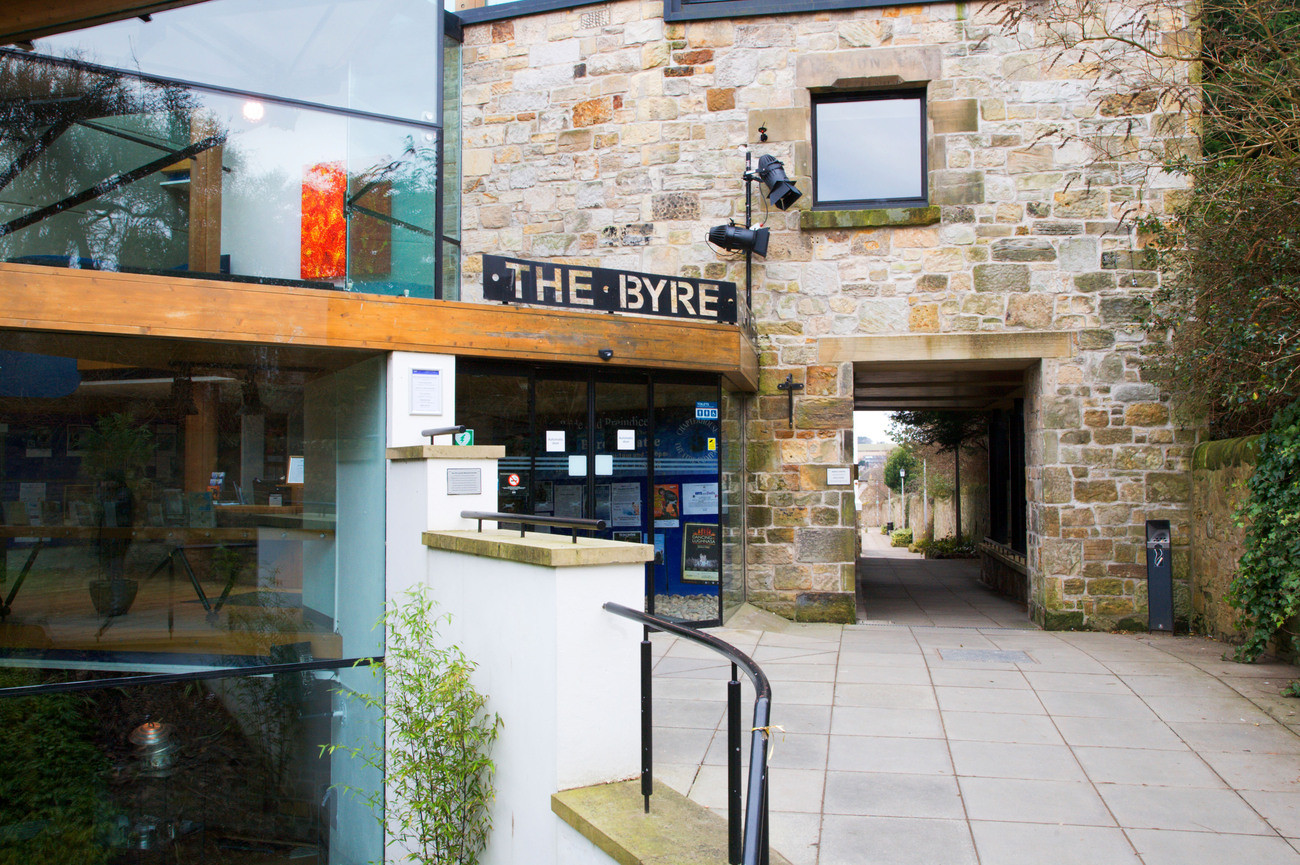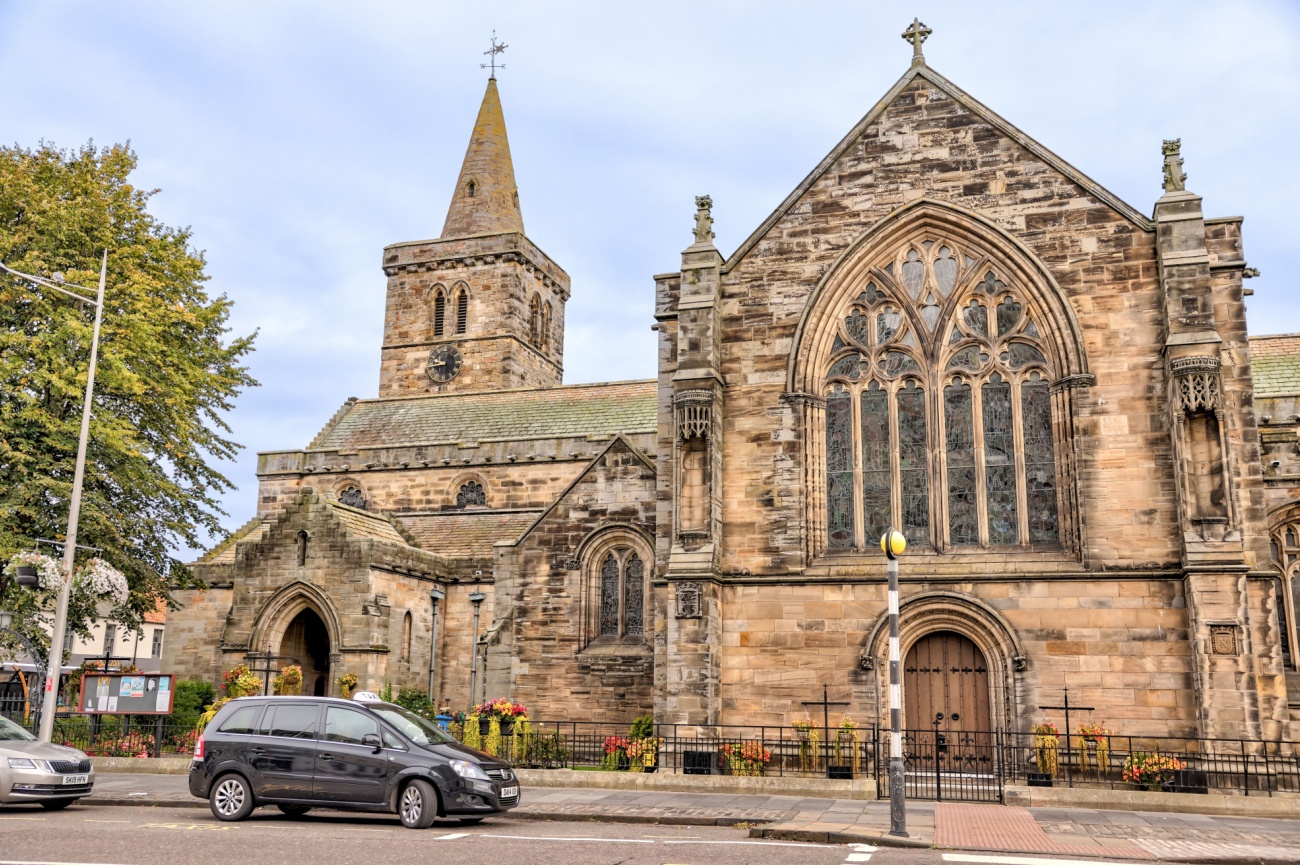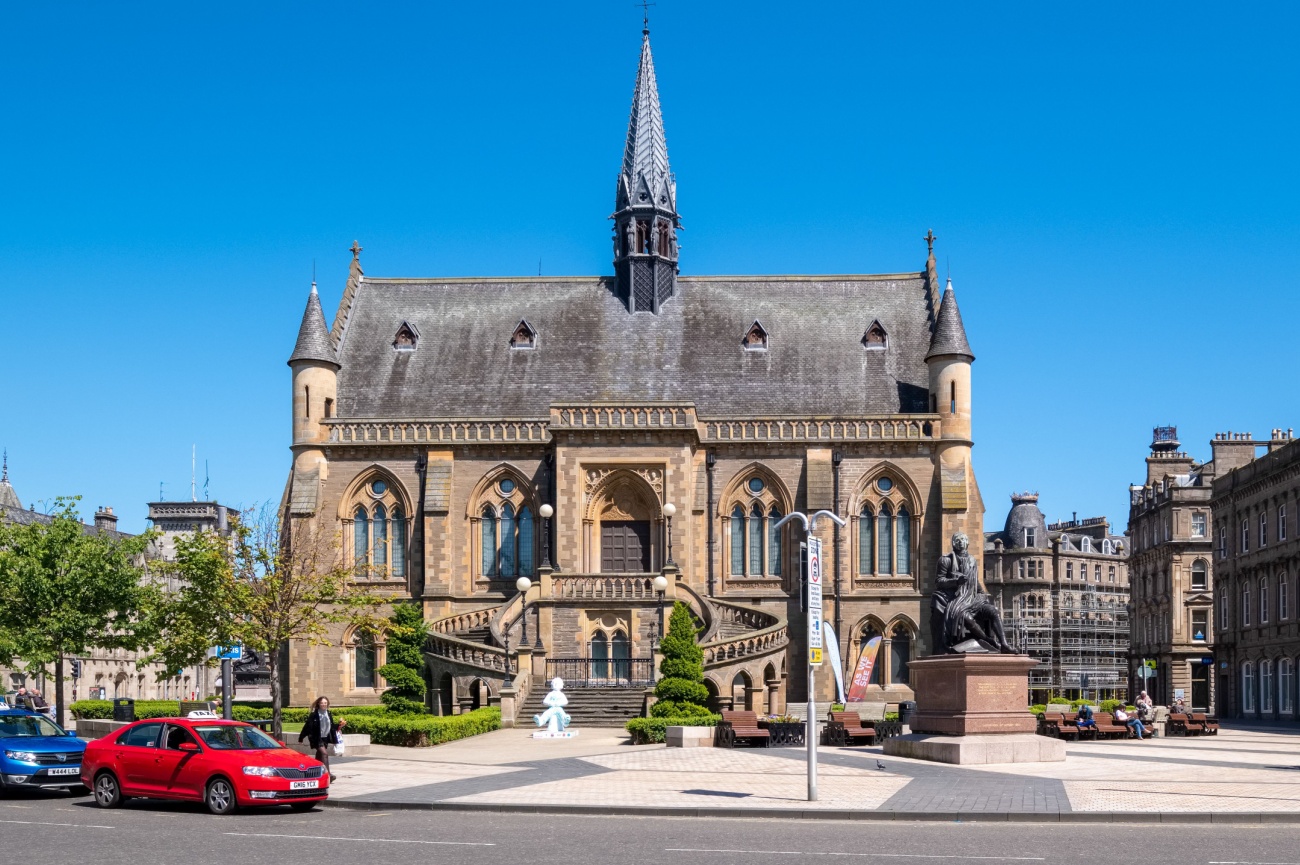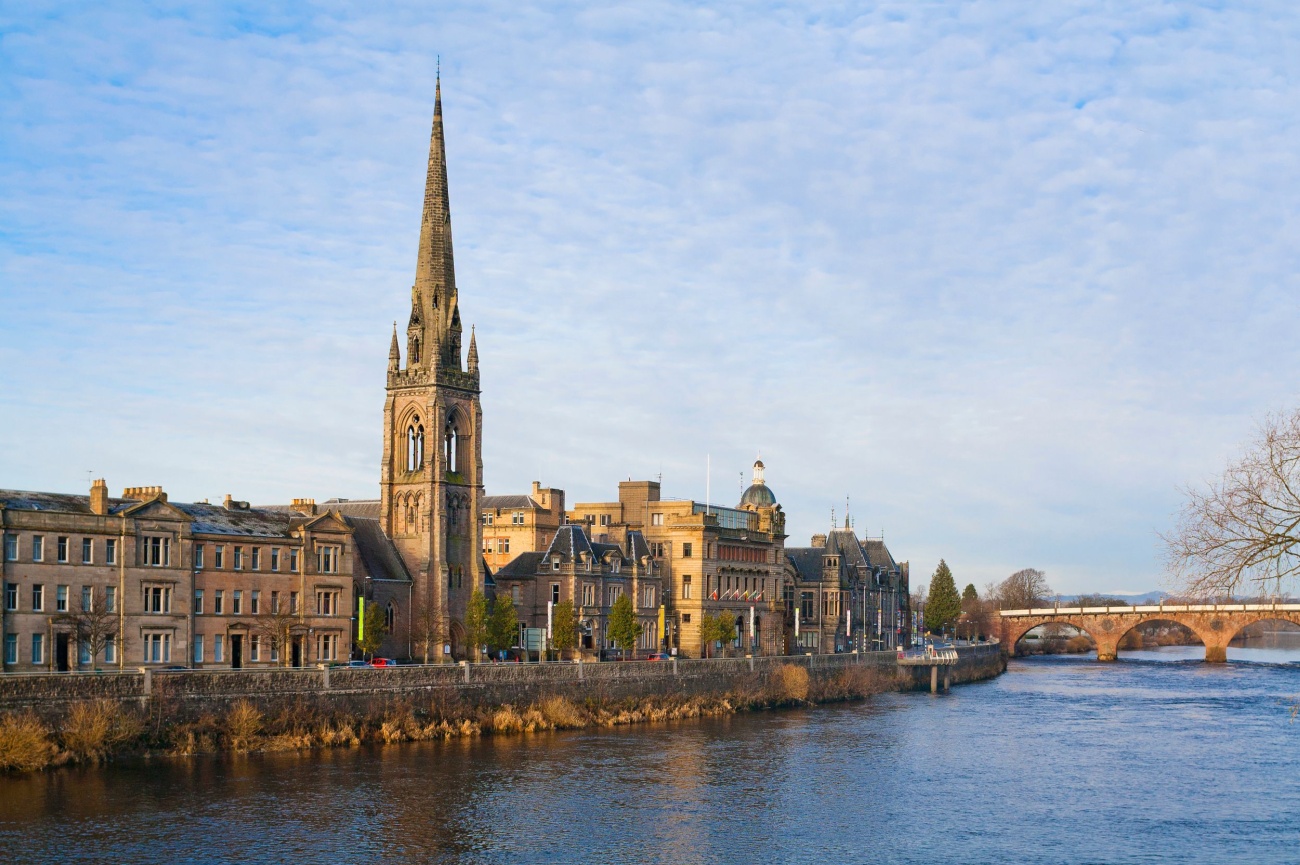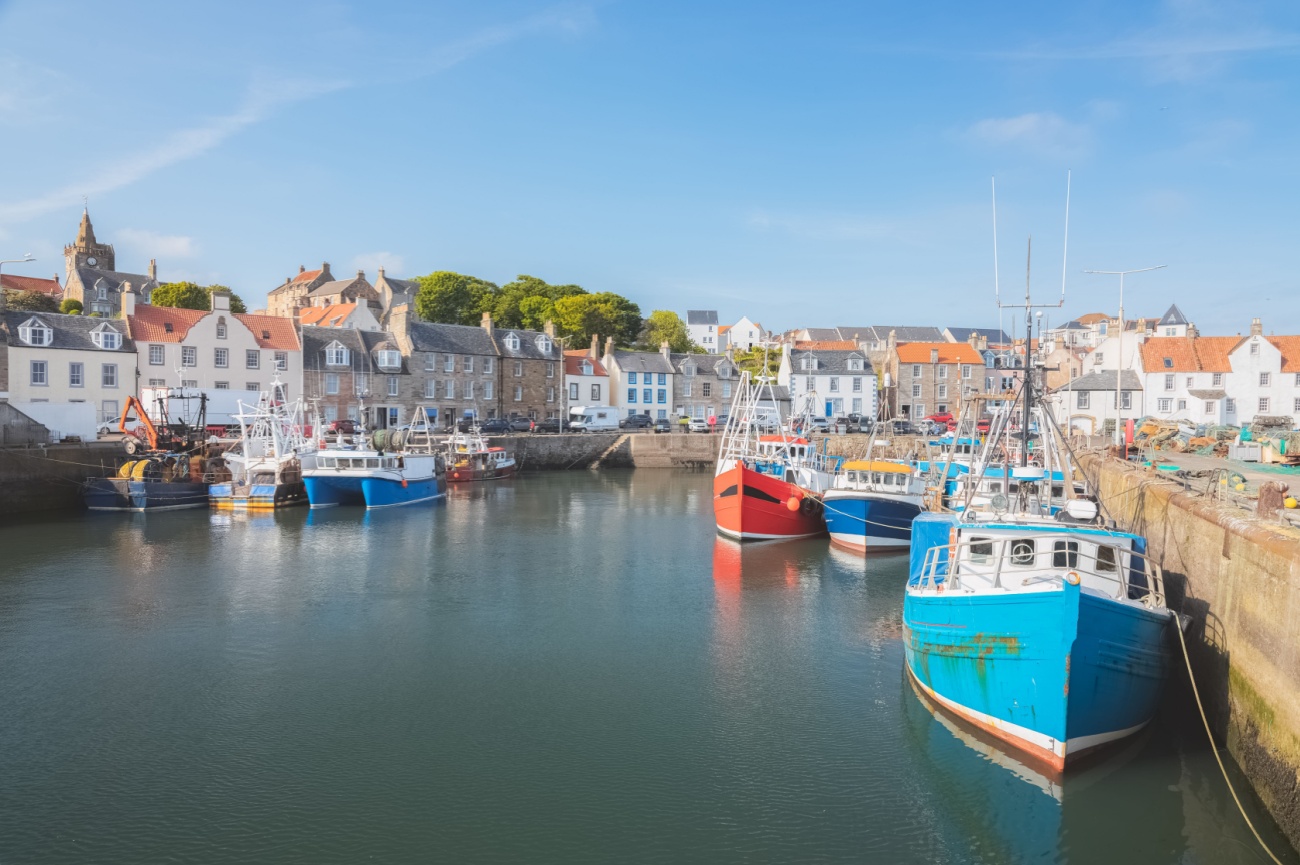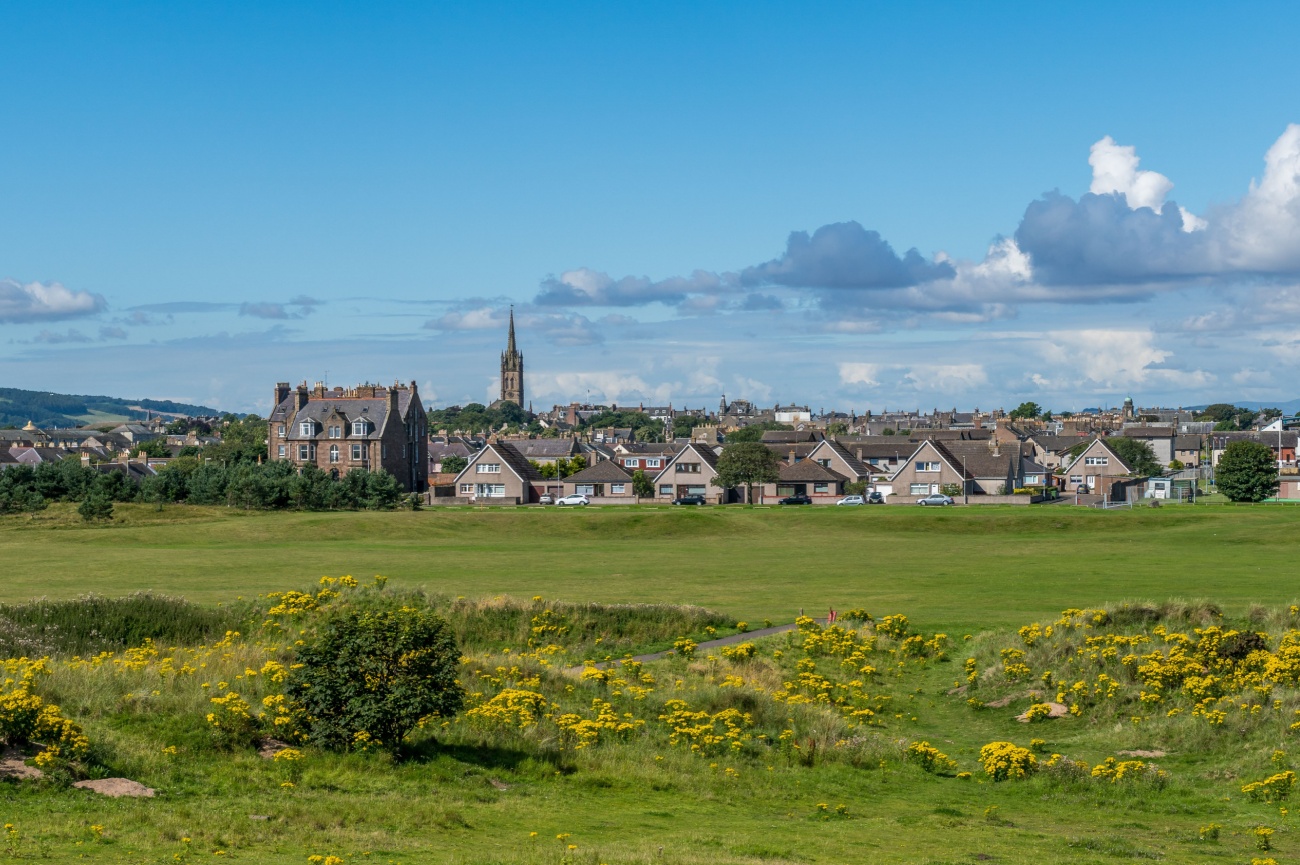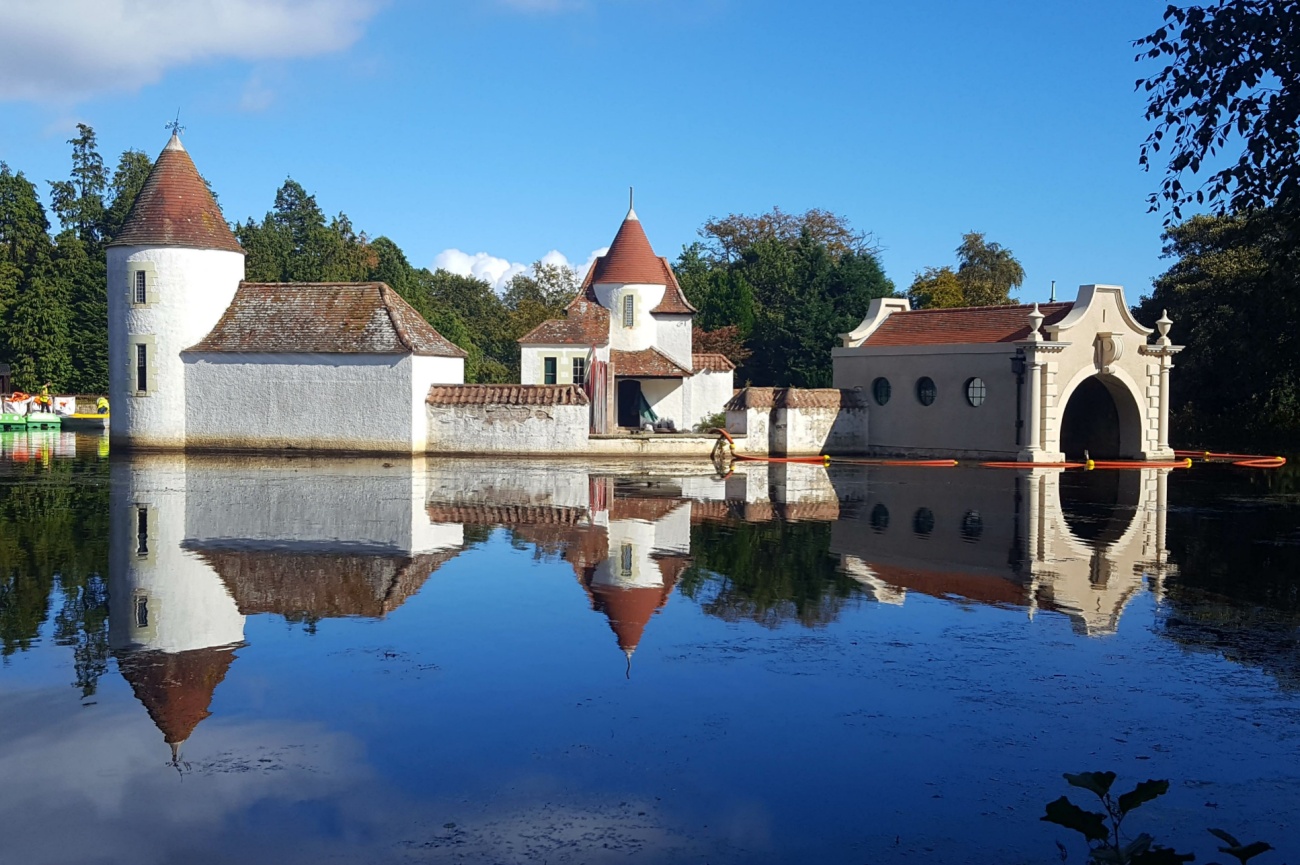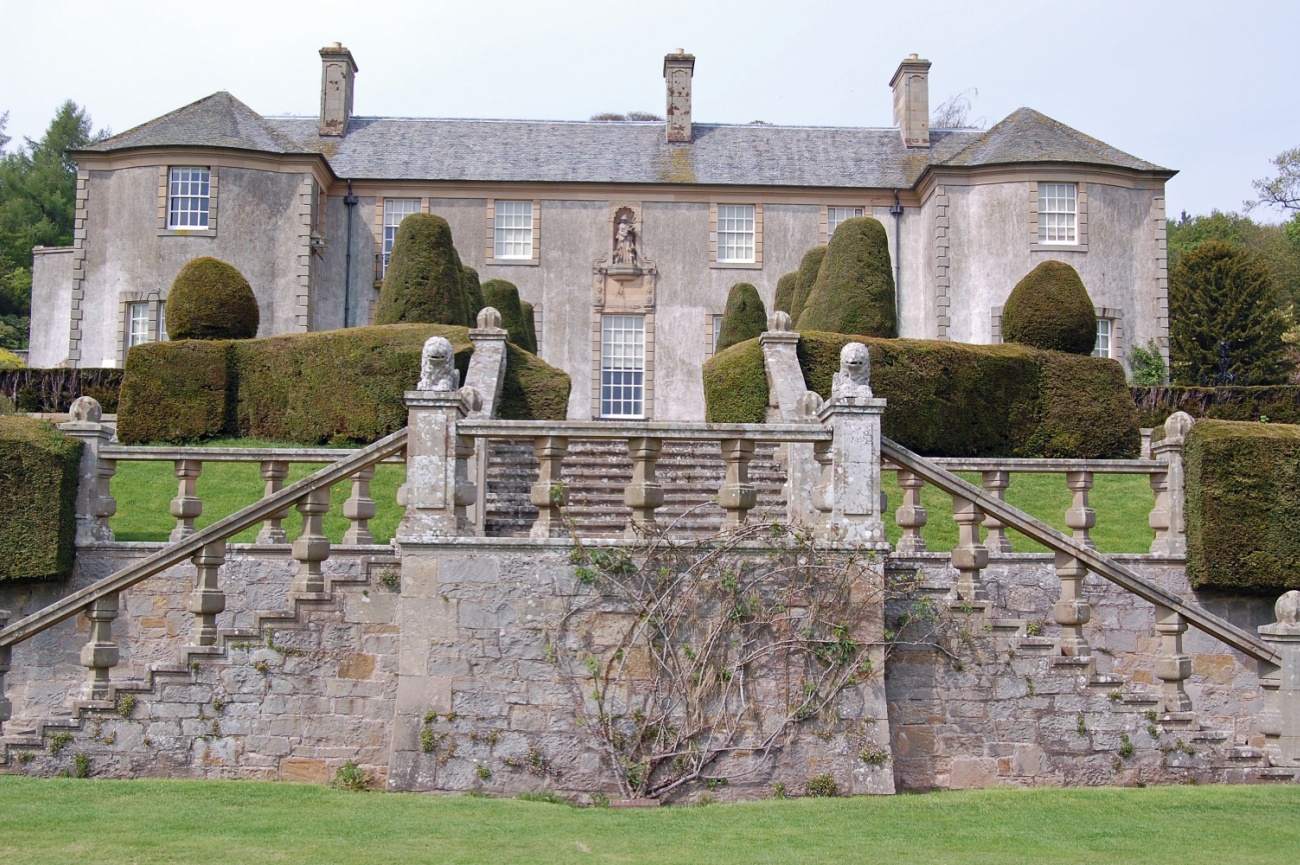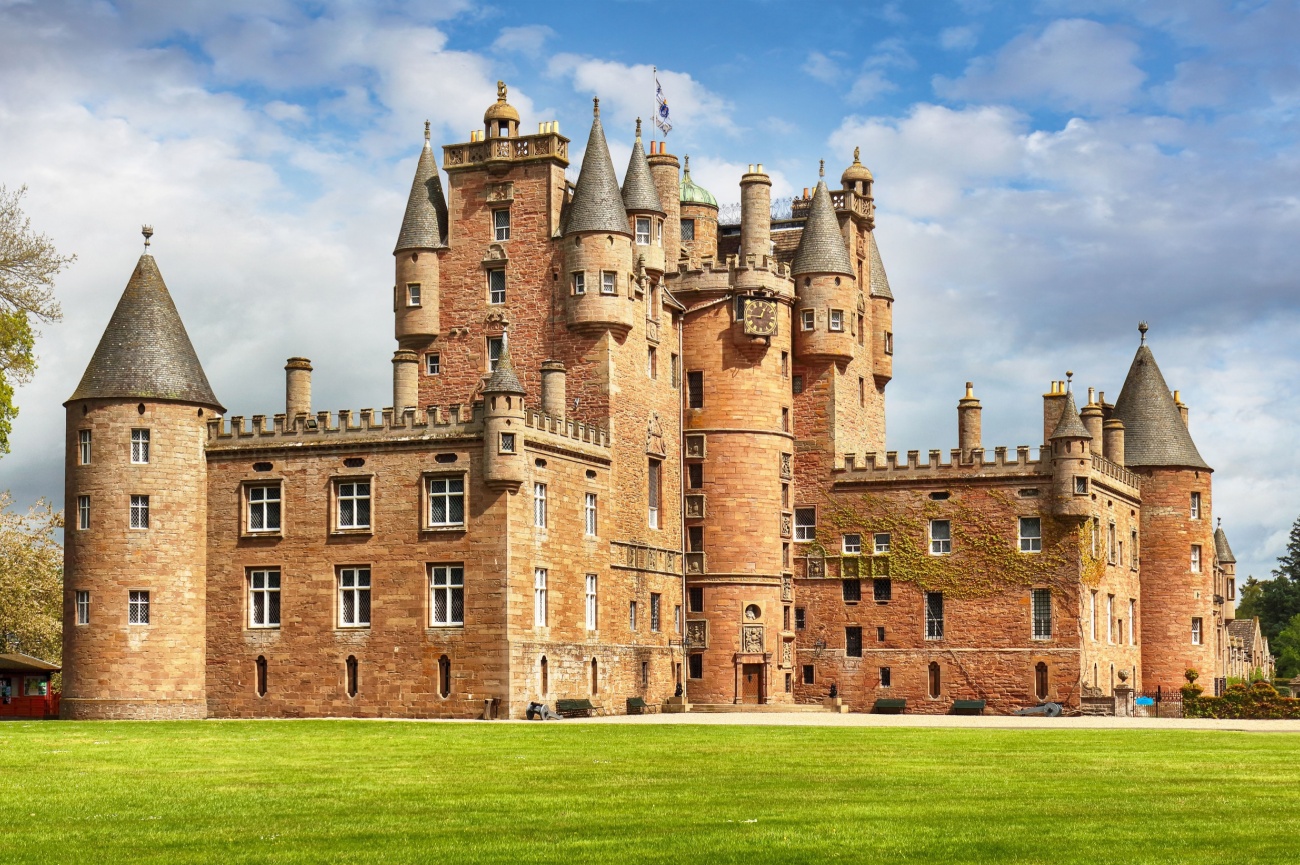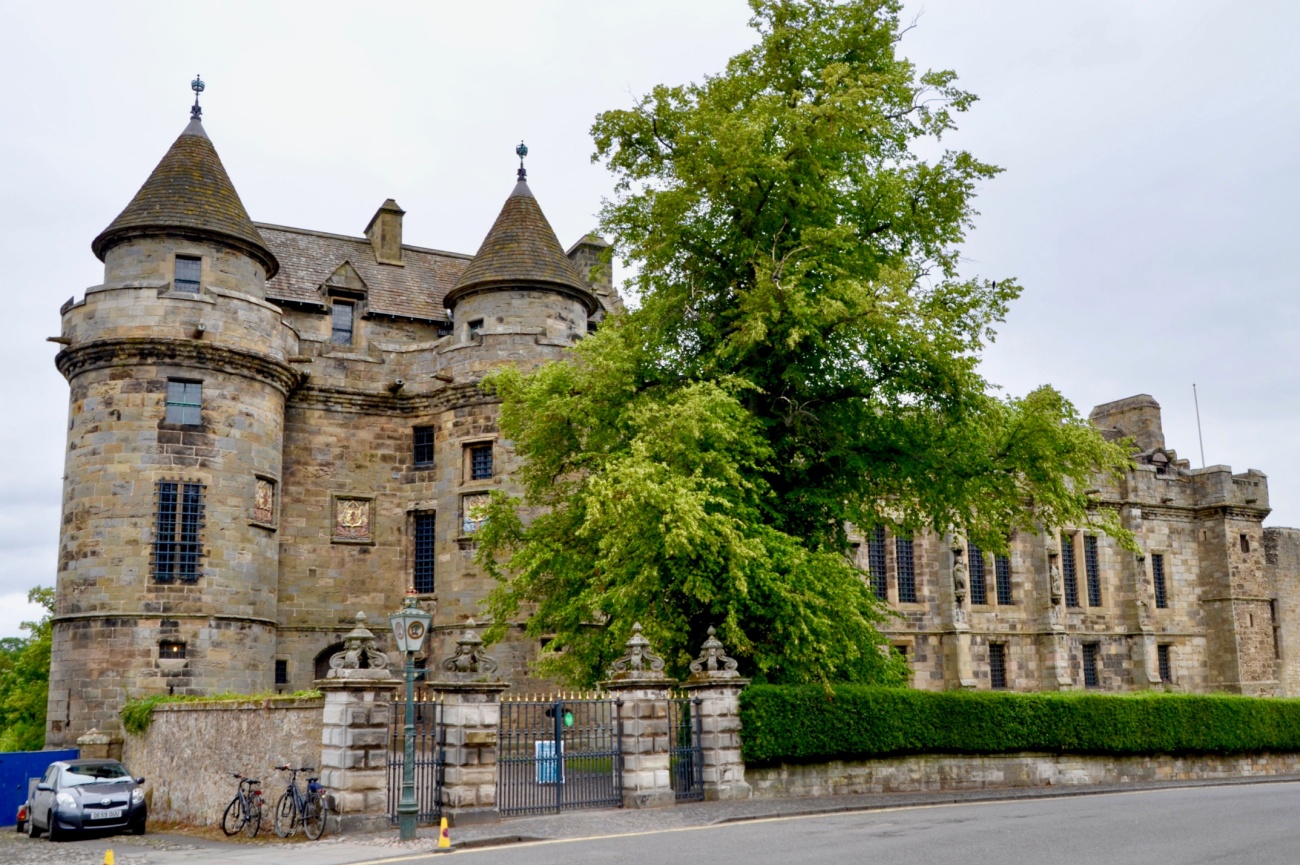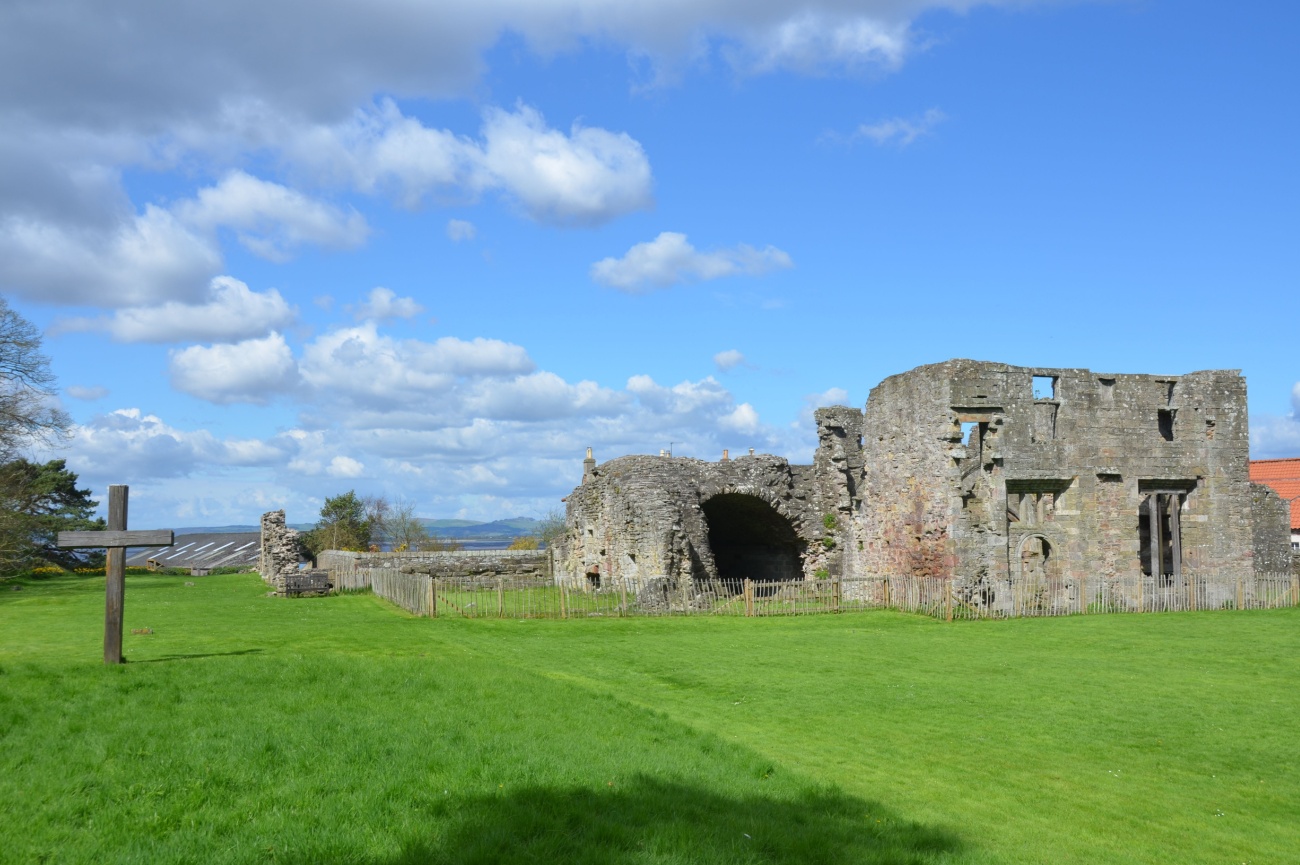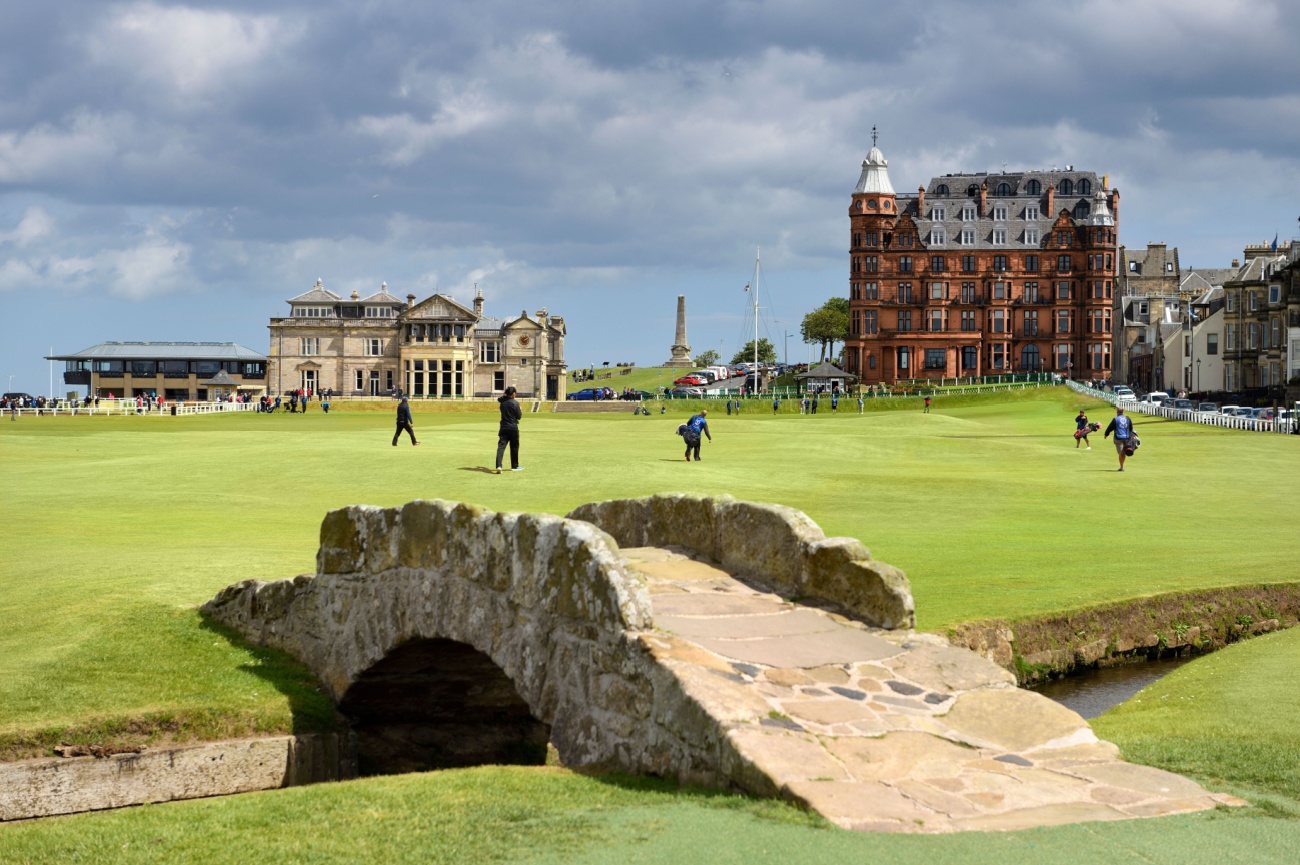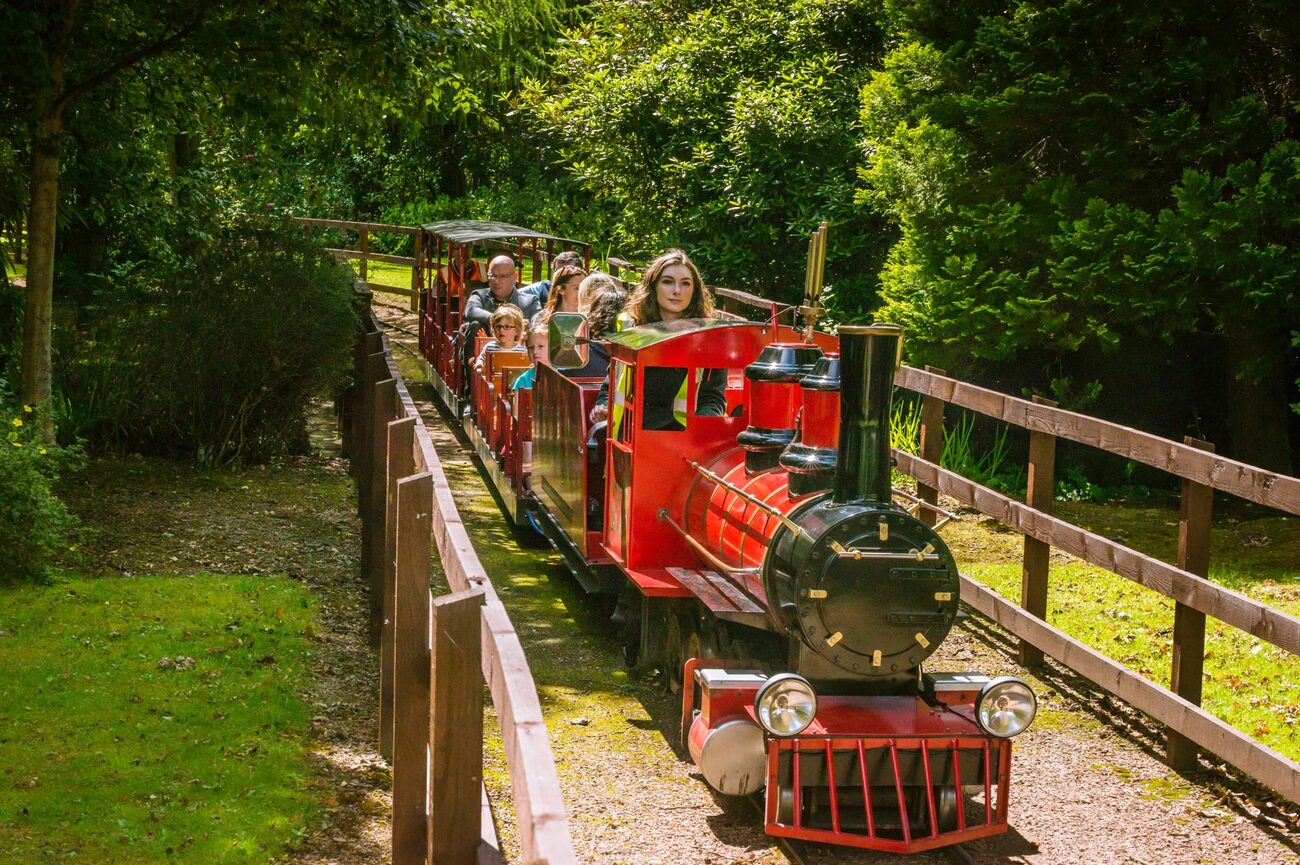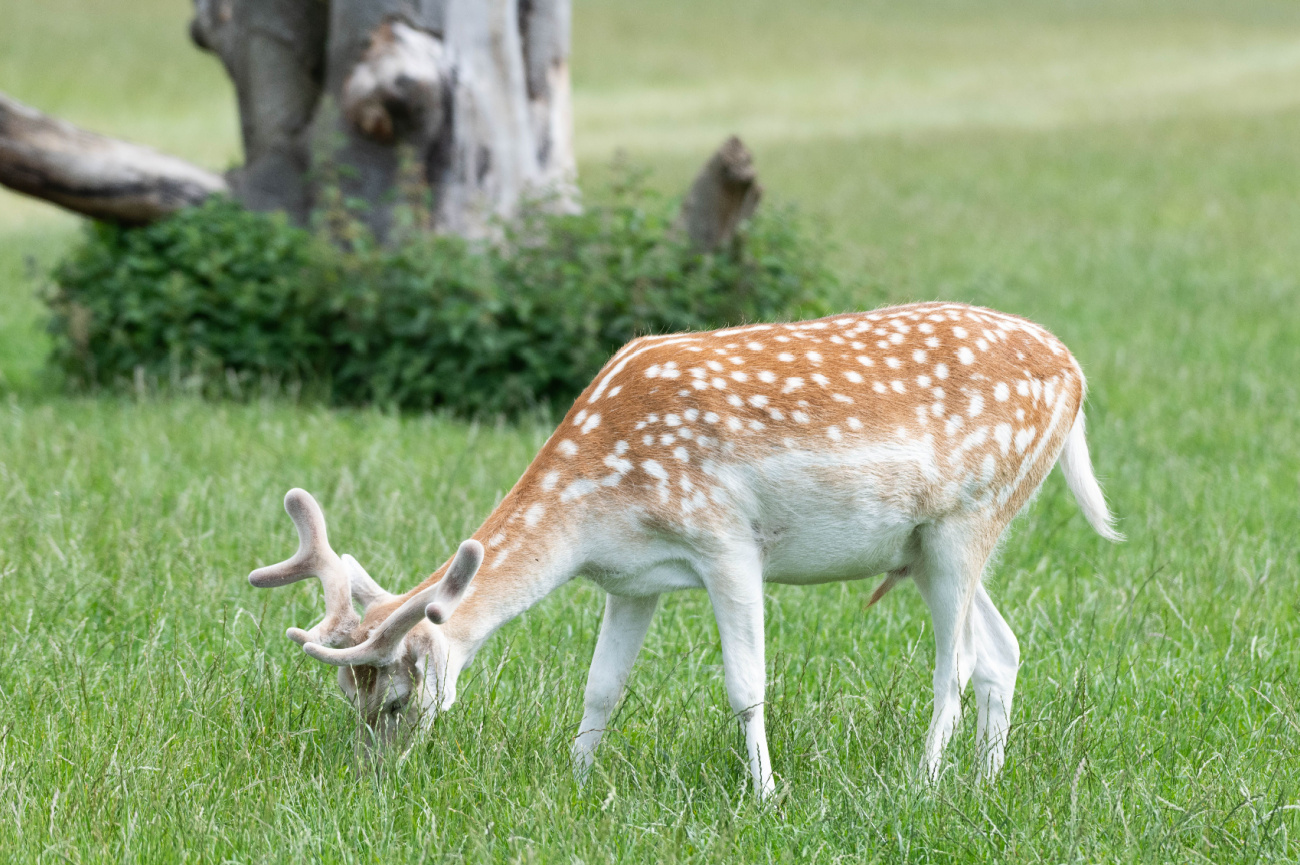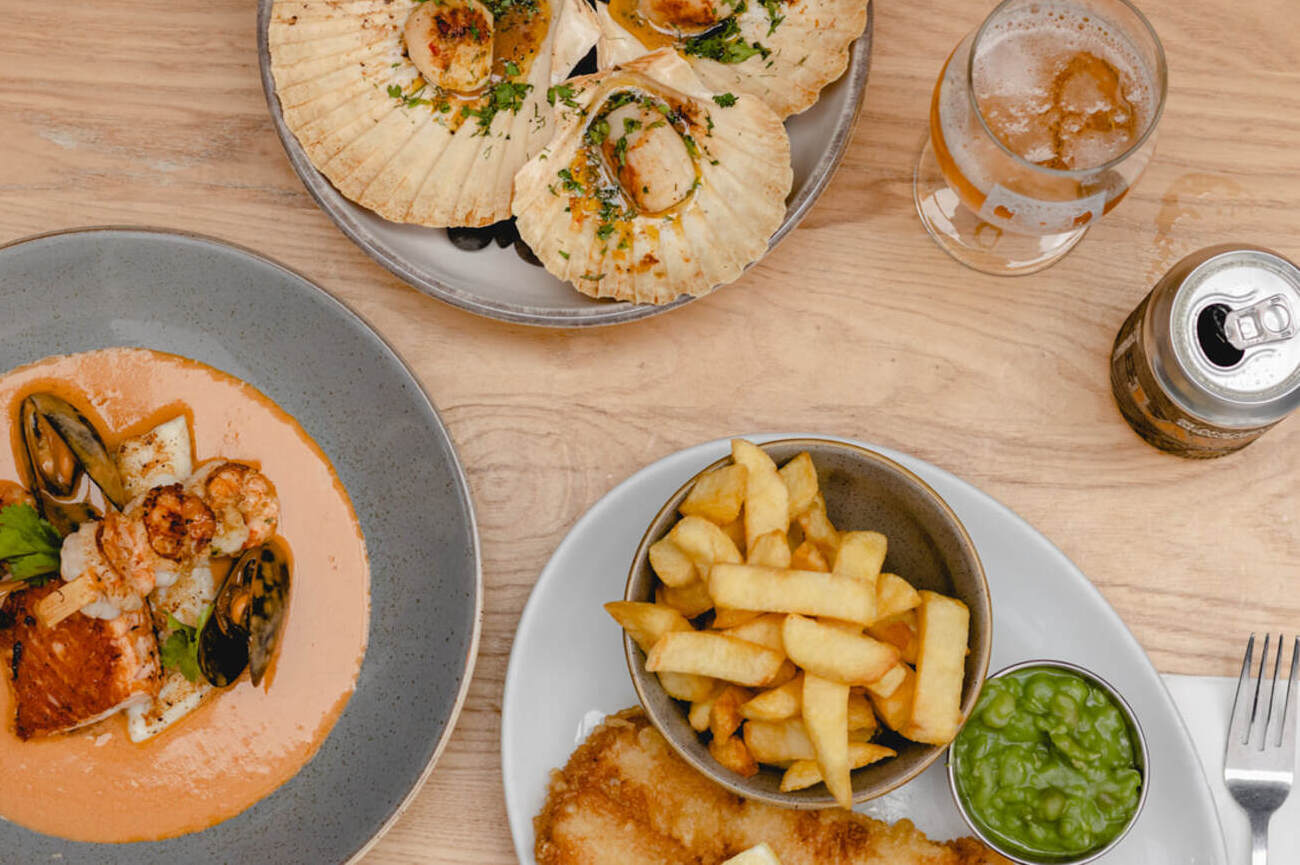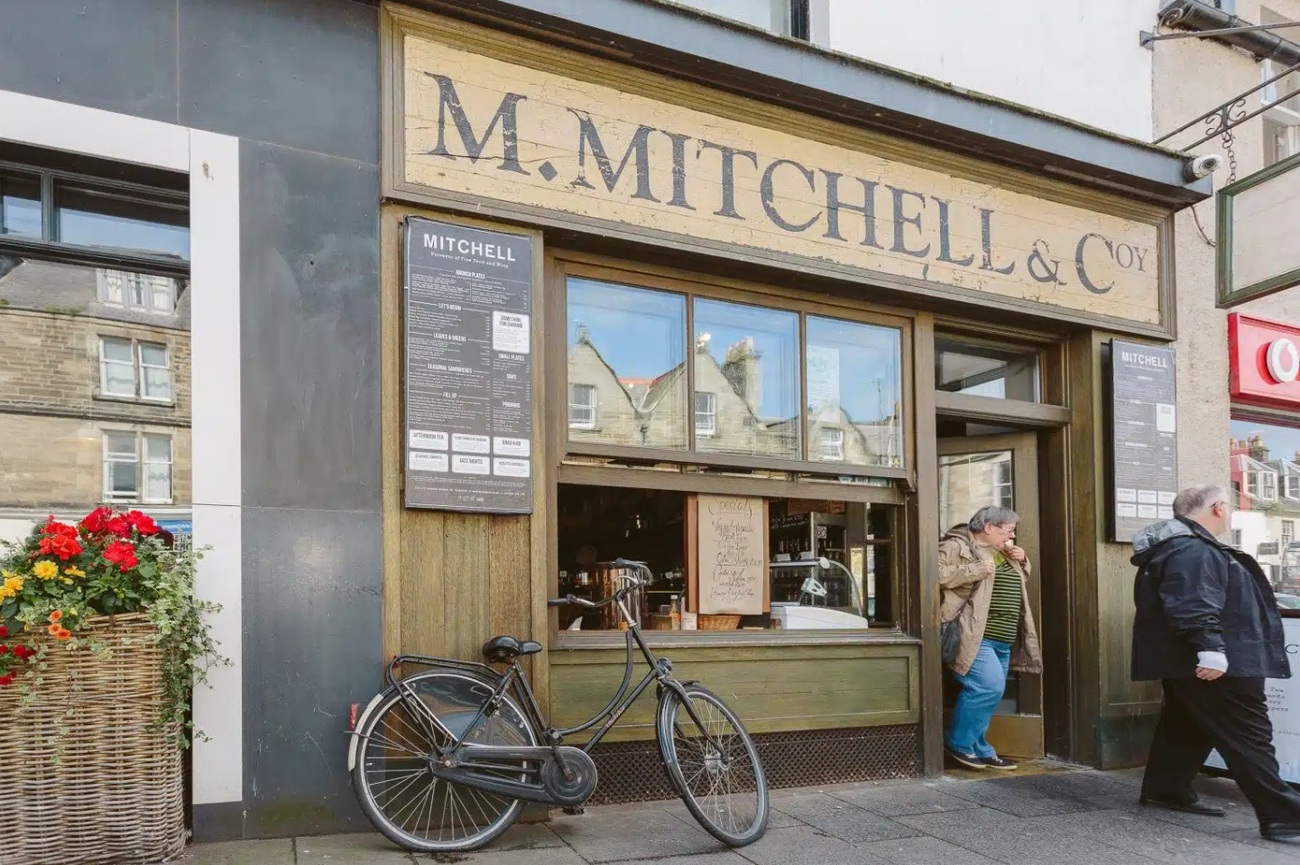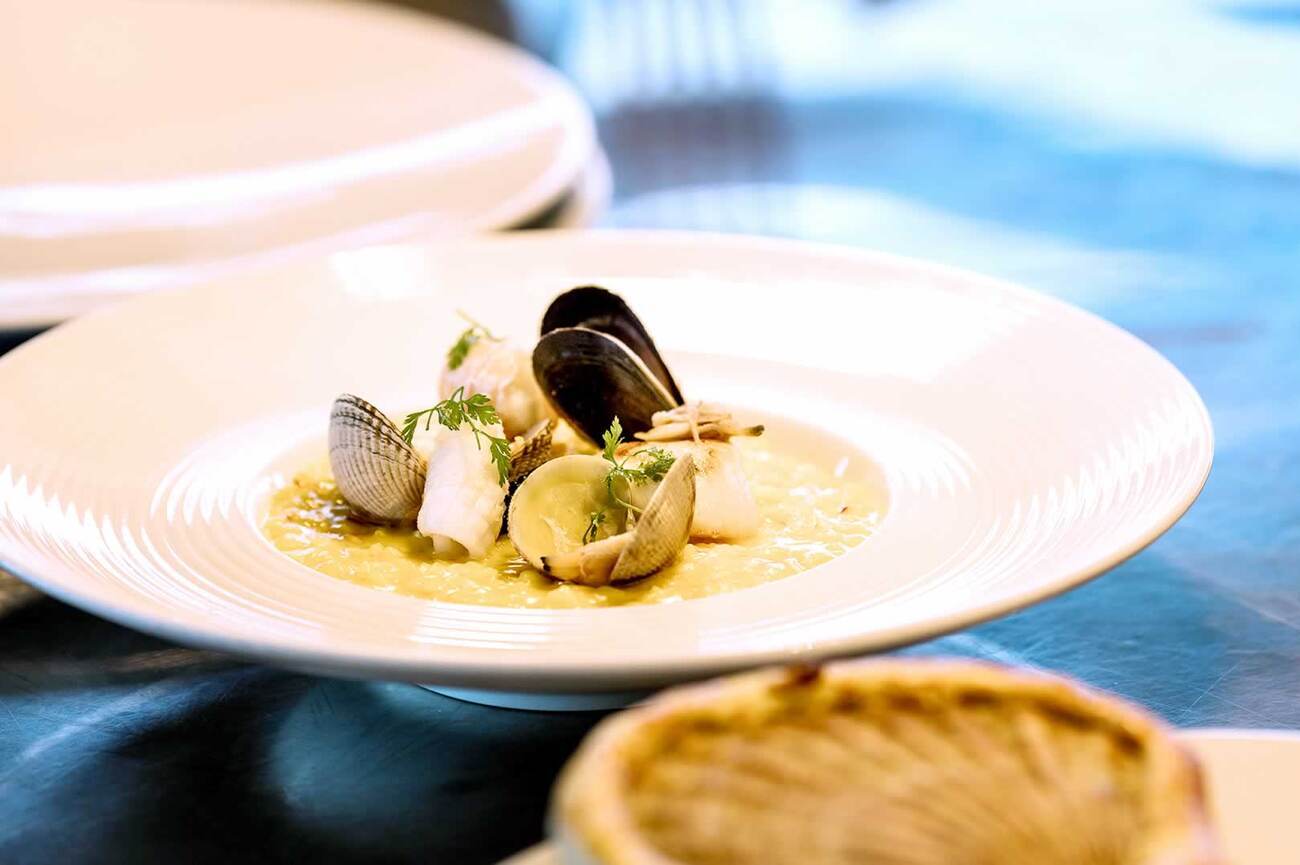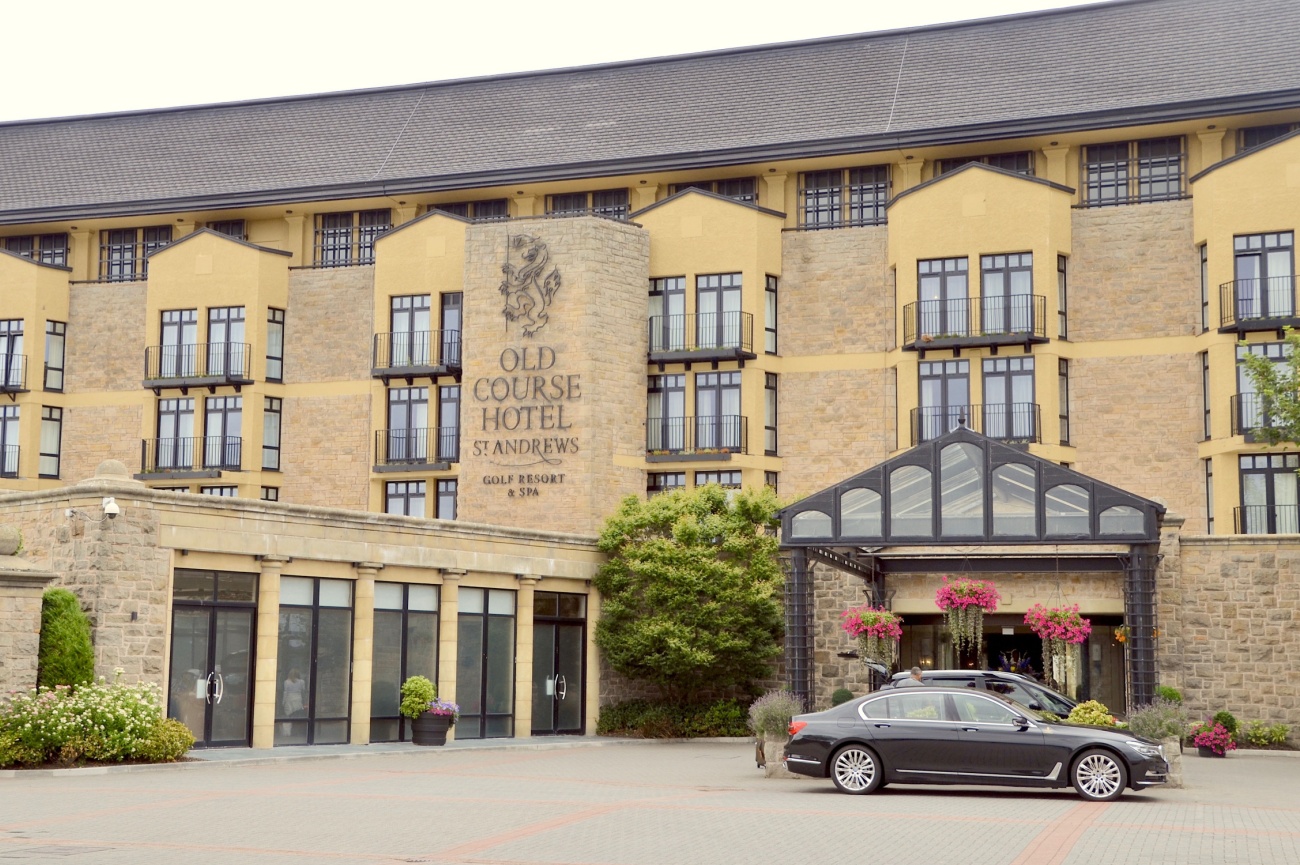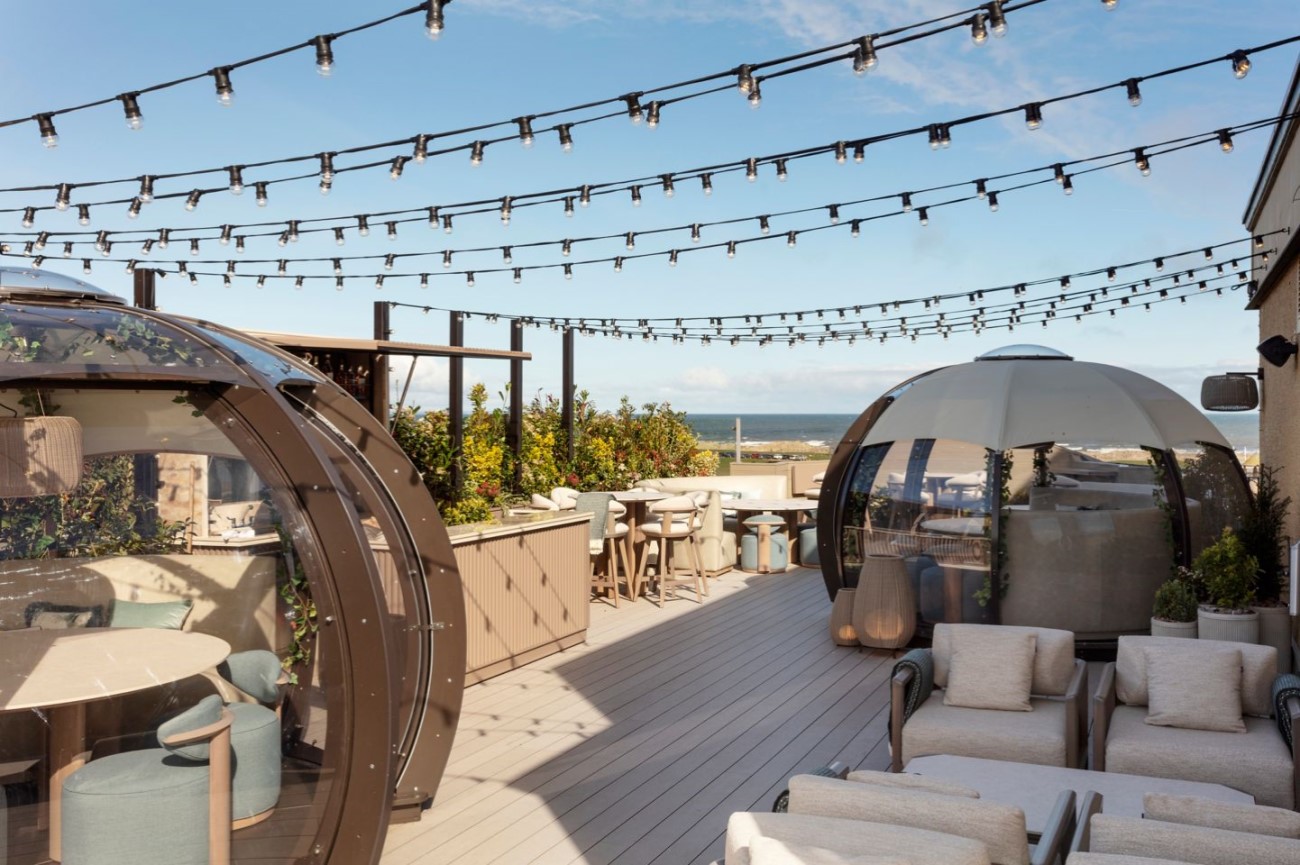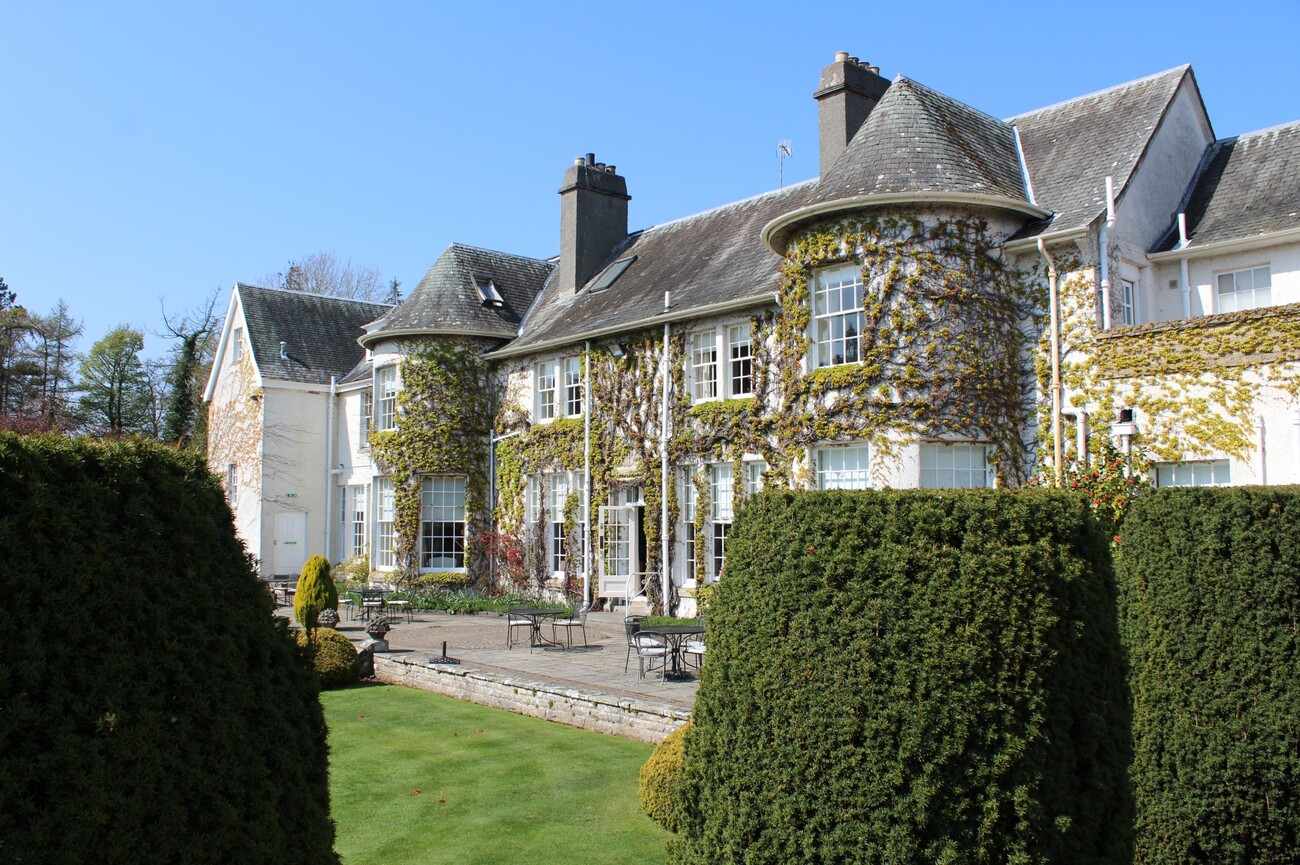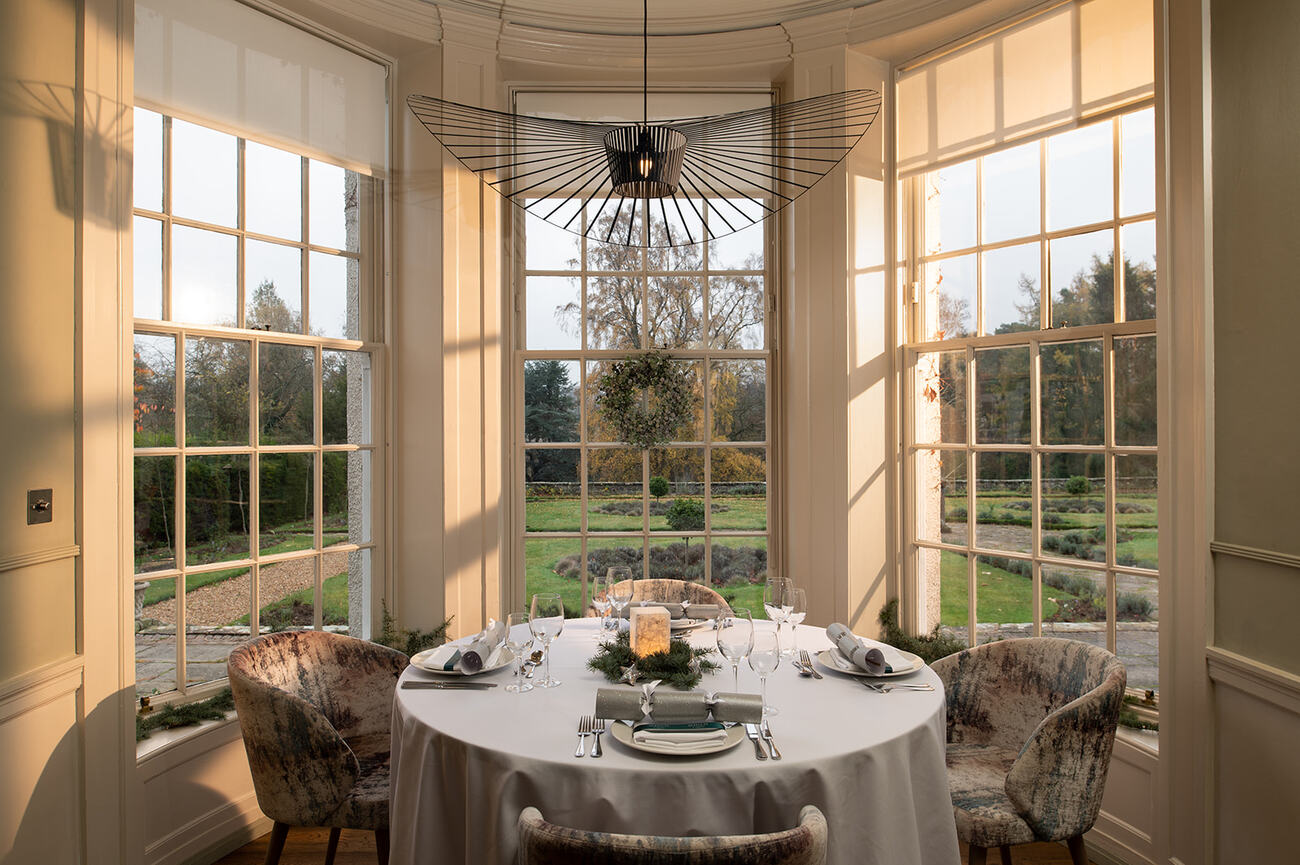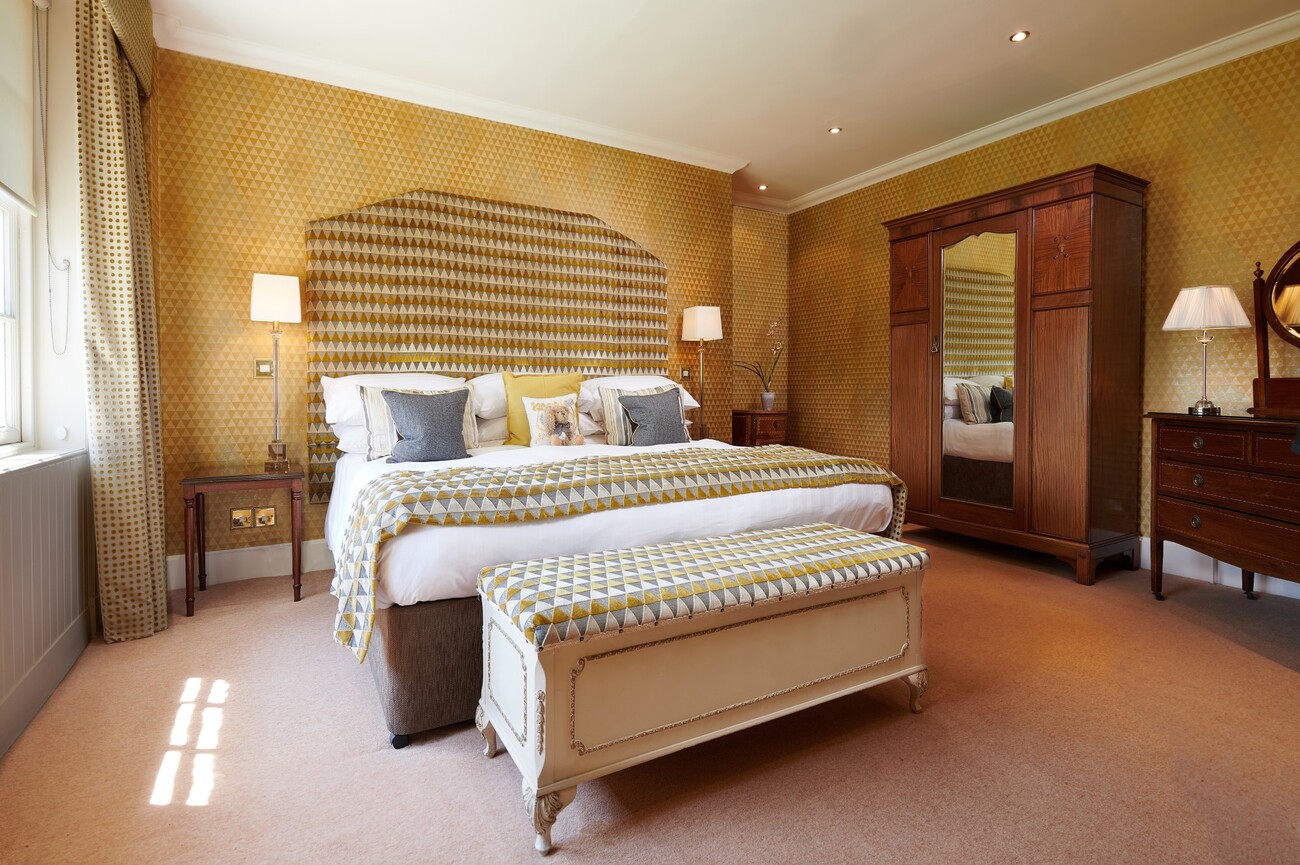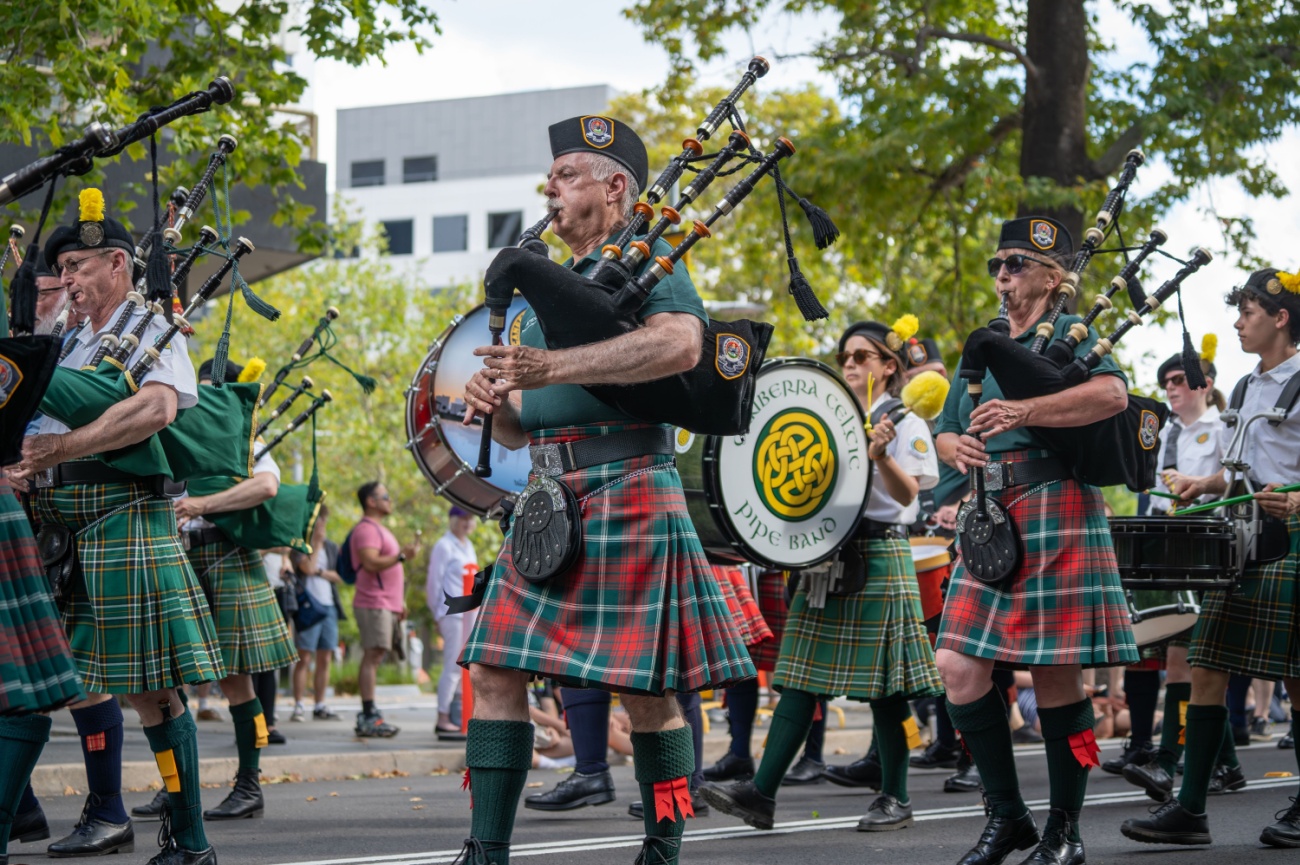Things to Do in St Andrews: 1-Day Itinerary
Famed for being the home of golf and Scotland’s oldest university, the seaside town of St Andrews boasts intriguing history, sandy beaches and warm hospitality. Our one-day itinerary features the top attractions including the cathedral and castle as well as the university campus. If you need ideas for where to eat or stay or what to do with the kids, be sure to check out our suggestions. St Andrews is also ideally located for exploring further afield, whether to bustling cities or charming fishing villages.
Day 1

Morning: West Port GateSt-Andrews-in-spring
Start your exploration of historic St Andrews at West Port. Built in 1587 by Thomas Robertson and extensively restored in 1843, this is one of the last remaining and best-preserved medieval city gates in Scotland. Its role was more decorative than defensive, with two semi-octagonal columns supporting the central arch. Pass through one of the pedestrian side arches onto South Street and continue towards the town centre.
Blackfriars Chapel
As you stroll along South Street, you’ll come across what remains of a 16th century Dominican monastery complex. The existing structure, Blackfriars Chapel, was attached to a larger church building, which was destroyed by Protestant reformers in 1559.
Hamish McHamish Statue
Make your way from South Street to Market Street. As you do, look out for the statue of the town’s feline celebrity, Hamish McHamish. Before his death in 2014, this ginger cat would famously roam the South Street area and was often seen posing for photos or paying local businesses a visit. Donations were raised for a commemorative bronze statue, which has been in pride of place since 2014.
Market Street
Wander along the cobbles of historic Market Street and make a stop at one of the numerous souvenir shops or grab a coffee at one of the cafes. On the first Saturday morning of each month, the street hosts an artisan market with stallholders selling handmade crafts and fresh produce.
St Andrews Cathedral
A short walk from Market Street, you’ll find one of the town’s most famous landmarks, St Andrews Cathedral. Despite being falling into ruin during the Scottish Reformation, the medieval cathedral is a remarkable place to visit and wandering around the grounds gives a sense of the scale of what was Scotland’s largest medieval church. If open, the museum is well worth a visit with its collection of stones, sculptures and relics.
St Rule’s Tower
Standing proudly in the centre of the ruins, St Rule’s Tower actually predates the cathedral but is in a remarkably good state of repair. A narrow spiral staircase to the top of the 33-metre square tower affords visitors impressive views over the town and out across the coastal landscape. Do note that the tower is not always open to visitors.
Church of St Mary on the Rock
Just outside the walls of St Andrews Cathedral, perched on the shore overlooking the sea are the ruins of the 12th century Church of St Mary on the Rock. This church was built as a place of worship for an order of Celtic monks called the Culdees. The church became a secular college of priests during the 1200s but was destroyed during the Protestant Reformation with very little of the original building remaining today. From the church ruins you can stroll along the small pier and enjoy the views over East Sands.
Morning – St Andrews Tour Map
Afternoon: St Andrews Castle
Continue along the coastal path until you reach the dramatically situated ruins of St Andrews Castle. The structure overlooks Castle Sands and the North Sea below and has witnessed many important moments in Scottish history including the Wars of Scottish Independence during which occupancy of the castle changed between the Scots and the English multiple times. Learn about the castle’s infamous bottle dungeon, grisly murders during the Scottish Reformation and the 16th century mine and countermine as you explore these fascinating ruins.
University of St Andrews
Among its accolades, the University of St Andrews is the third oldest university in the English-speaking world and the oldest university in Scotland. It’s also where Prince William met his future wife, Catherine, during their time studying at this historic institution, which dates back to 1413. The university’s central location means the town buzzes with student activity and at certain times of year you’ll spot students taking part in traditions such as Raisin Weekend, the May Dip and the Pier Walk. Among the areas open to visitors are St Mary’s Quadrangle and St Salvator’s Quadrangle.
St Salvator’s Chapel
Dating back to 1450 when it was founded by Bishop James Kennedy, St Salvator’s chapel is an excellent example of Late Gothic style architecture. It is the official university chapel and boasts impressive stained-glass windows and an intriguing history. Look out for the infamous PH initials on the stone path by the bell tower outside. They stand for Patric Hamilton, a Protestant who was burnt at the stake in 1528 and serve as a reminder of the religious violence experienced in the town during the 16th century.
Wardlaw Museum
Also known as the Museum of the University of St Andrews (MUSA), the Wardlaw Museum is home to impressive art, history and science collections exploring the history of the university in displays across four galleries. As well as the permanent exhibitions, there are temporary displays and a gift shop. Be sure to make a stop at the viewing terrace for impressive sea views.
The Old Course and Swilcan Bridge
St Andrews is known as the home of golf and the Old Course is among the oldest and most famous golf spots in the world, with the first game being played in the early 1400s. The course is popular with celebrities and although open to the public, slots get booked up far in advance. Nonetheless, you can wander alongside the course and make a stop at the famous Swilcan Bridge for a picture, so long as you don’t interfere with play.
The R&A World Golf Museum
Having seen golf in action, head to the R&A World Golf Museum to learn about the history of the sport from its beginnings to the modern day. The interactive exhibitions cover equipment, fashions and historical developments of the game over more than 400 years of history.
West Sands
You might recognise this beach from its appearance in the opening sequence of the 1981 film, Chariots of Fire. As well as cinematic fame, West Sands also boasts the accolade of the largest beach in St Andrews. Take a stroll along this two-mile golden stretch, which is particularly scenic at sunset. The beach has been made all the more accessible with the availability of beach wheelchairs.
Ghost tour
Finish your day exploring St Andrews with a spooky evening activity. Discover the locations of reported paranormal activity as you wander the town’s cobbled streets and learn about significant moments in its history.
Afternoon – St Andrews Tour Map
Other Things to See in St Andrews
- Fife Coastal Path: Head to East Sands where you can join part of the 187-kilometre Fife Coastal Path as it winds its way alongside fascinating rock formations and the crashing waves of the North Sea. A popular choice is to walk along as far as the Rock and Spindle volcanic rock formations, passing the sea stack known as Maiden’s Rock on the way. The views of St Andrews on the return journey are particularly impressive. Parts of the Fife Coastal Path are suitable for cycling, be sure to check out local route information.
- St Andrews Botanic Garden: A short walk from the town centre, you’ll find the serene setting of the St Andrews Botanic Garden. Covering 18 acres, it’s a great spot to bring a picnic and take a stroll. There is an accessible circular route as well as a visitor centre and gift shop. The various sections of the garden include woodland, meadows, a rockery and several ponds and over 8000 species of plant call the garden home.
- St Andrews Museum: Set in an imposing Victorian mansion in Kilnburn Park, St Andrews Museum explores the town’s history through its fascinating collection of artefacts as well as temporary exhibitions. There’s also a popular onsite café, Sweetpea at the Museum.
- St Andrews Heritage Museum and Garden: Learn about the people of St Andrews from the 19th century onwards at the St Andrews Heritage Museum and Garden. Housed in a 17th century stone house in the town centre, the museum boasts a wide collection of art, clothing, furniture and photographs, with social history displays designed to immerse visitors in the town’s history. Be sure to visit the tranquil ‘hidden’ garden behind the museum too. Please note that the museum closed in 2024 for major refurbishment and is due to reopen in 2025.
- Distilleries and breweries: There are ample opportunities to sample locally produced whiskey and beer on a visit to St Andrews. You might choose to head a little out of town for a tour of the converted 18th century farm steading at Kingsbarns Distillery and Visitor Centre or perhaps you’ll prefer to stay within walking distance of the local attractions and find out about the process of producing craft beer at the St Andrews Brewing Co. Eden Mill Distillery is also due to become fully operational in 2025.
- Fraser Gallery St Andrews: Art lovers can enjoy diverse exhibitions of contemporary British art at this private gallery on South Street. Be sure to also visit the displays in the gallery garden.
- Byre Theatre: Catch a show at the award-winning University of St Andrews’ Byre Theatre. The exciting programme of performances available during the year include musicals, theatre and opera. The theatre prides itself on being part of the community, playing host to student and local groups as well as professional performances.
- Holy Trinity Church: First founded in the 12th century, Holy Trinity Church has an intriguing history. The current site has been home to the church since 1412, however only a limited section of the original building remains following remodels in the 19th and 20th centuries.
Day Trips From St Andrews
- Dundee: Easily accessible from St Andrews by car or public transport, Dundee is Scotland’s fourth largest city and known for its industrial heritage. Among its top attractions are the V&A Dundee, a dedicated design museum housed in an iconic waterfront building, and the McManus: Dundee’s Art Gallery and Museum.
- Perth: Enjoy architecture, history and first-class galleries in the charming city of Perth. Set on the banks of the River Tay, this is a very walkable city with highlights including the Perth Museum and the famous Stone of Destiny as well as Perth Art Gallery. Be sure to also pay a visit to Scone Palace and its beautiful gardens.
- East Neuk Fishing Villages: While in Fife, take the opportunity to explore the picturesque and colourful villages of the East Neuk. The fishing villages of this scenic coastal peninsula boast cobbled streets, charming harbours and historic buildings. One option is to walk the East Neuk section of the Fife Coastal path, visiting top spots such as Elie Ness Lighthouse and St Monan’s Windmill. There’s something for everyone on a visit to East Neuk, whether you choose to spend your time on the region’s beaches, in one of the local museums or sampling local produce at one of the many food establishments.
- Arbroath and Montrose: Spend the day exploring the coastal towns of Arbroath and Montrose. Arbroath is famed for its pretty harbour, historic abbey and the Arbroath Smokie, a smoke-cured haddock. Montrose, meanwhile, is home to a museum and art gallery, a nature reserve and the Air Station Heritage Centre. For keen walkers, the area boasts beautiful beaches including Lunan Bay.
- Craigtoun Park: This vast country park is especially popular with families. From Easter to October, you can ride the miniature railway, take a tractor ride, zoom about on the Go-Kart track or enjoy a round of crazy golf. There’s also a boating lake, nine-hole Park Golf course and bouncy castles. As well as paid activities, there’s a large playground, trim trails and the enchanting Fairy Glen.
- Hill of Tarvit: Cared for by the National Trust for Scotland, the Hill of Tarvit is a charming arts and crafts style mansion to the west of St Andrews. The house and landscaped gardens were designed by Sir Robert Lorimer in the early twentieth century. While visiting you can explore not only the elegant rooms of the main house including the Sharp Collection but also the servants’ areas. There’s also a nine-hole hickory golf course.
- Glamis Castle: This beautiful castle with its red sandstone exterior and majestic turrets makes for a fascinating visit. Of particular note is Glamis Castle’s connections to the royal family and its role in Shakespeare’s Macbeth. The charming gardens feature numerous walking trails designed to show off the diversity of planting and habitats beyond the castle’s walls.
- Falkland Palace: Discover an impressive example of Renaissance architecture in Scotland on a visit to Falkland Palace. Once home to Mary, Queen of Scots, this chateau-like palace boasts an impressive array of carefully preserved 17th century objects. The gardens are also well worth a visit and are home to the oldest real (or royal) tennis court in Britain.
- Balmerino Abbey: Near the bank of the River Tay lies a small ruined Cistercian monastery, which dates back to the 13th century. It fell into disrepair following the tumultuous events of the 1500s and is now cared for by the National Trust for Scotland. The peaceful surrounding grounds are home to the oldest tree in Fife.
Best Golf Courses Near St Andrews
Unsurprisingly for a town known as the home of golf, there are plenty of golfing options to choose from. St Andrews Links is made up of seven public courses including the world-famous Old Course, which is the only one of the seven to require a handicap. There are also a further three courses in and around St Andrews: Torrance, Kittocks and Duke’s. You don’t need to limit yourself to the town though, there are numerous courses across Fife to choose from including coastal and heathland courses.
Things to Do With Kids in St Andrews
With three beaches accessible from the town centre, some time at the beach is perfect for children to let off some steam and enjoy playing in the sand. West Sands is the longest, while East Sands is particularly popular for water sports including surfing and sailing. A short drive from the town centre, Craigtoun Country Park has a whole host of activities to keep children entertained, from adventure playgrounds to a boating lake to a miniature railway. Wildlife enthusiasts will no doubt enjoy the St Andrews Aquarium with its seals and penguins or further afield, the Scottish Deer Centre. There are plenty of ruins to explore while visiting the castle and cathedral, with ghost tours adding a spooky aspect to learning about the town’s history. If the weather calls for an indoor activity, there’s the East Sands Leisure Centre, complete with a baby pool, main pool and slides.
Where to Eat in St Andrews
- Forgan’s: Step into the welcoming atmosphere of Forgan’s, once home to a golf club factory and now one of St Andrews’ favourite restaurants offering delicious Scottish cuisine. At the weekends the restaurant often hosts lively ceilidhs and if you’re visiting with a group, you can book a bothy for private dining.
- Tailend: If you’re in the mood for seafood, head to Tailend, an award-winning restaurant in central St Andrews. Sample the hot smoked salmon or Arbroath smokies or stick to Tailend’s famous fish and chips. The menu features seasonal produce and also includes non-fish options.
- Mitchells: Focusing on Scottish produce, this restaurant and deli is popular all day long, whether for an indulgent brunch, a coffee and cake or sharing a bottle of wine alongside a deli counter platter. Whenever you choose to visit, you’re sure to enjoy the friendly atmosphere and the the seasonal, locally sourced menu.
- Seafood Ristorante: At Seafood Ristorante you’ll find fresh Scottish seafood served in a contemporary style, often with an Italian twist. Alongside a delicious menu, this restaurant boats an impressive location overlooking St Andrews Bay through floor-to-ceiling glass windows.
- Northpoint Café: The sign in the window of this central café proclaims, ‘where Kate met Wills for (for coffee)’. Royal fame aside, this convenient spot popular with students has an extensive breakfast menu and lunch options including soup, toasties and bagels.
Where to Stay in St Andrews
- The Old Course Hotel (5 Stars): Overlooking the iconic Old Course as well as West Sands, the Old Course Hotel occupies a prominent position in the town. It was built in the 20th century on the site of an old railway station and boasts a luxurious spa along with175 well-appointed rooms. Among its numerous restaurants and bars is Road Hole, awarded a 3 AA Rosette and known for its fine dining focused on Scottish produce.
- Rusacks Hotel (5 stars): Dating back to 1887, this luxurious hotel is a celebration of the town’s golfing history. There are impressive views over the Old Course as well as West Sands, the beach made famous in the Chariots of Fire opening sequence. Its convenient location combined with sumptuous rooms make this a popular choice, especially for golfers. As for dining options, there’s a choice of three including the rooftop brasserie, Eighteen.
- Hotel Du Vin (4 stars): Conveniently located on the Scores, within a few minutes’ walk of West Sands, the Old Course and St Andrews Castle, Hotel Du Vin offers stylish and comfortable accommodation. The large Victorian villa boasts 36 well-equipped rooms and suites and a relaxed French-style bistro.
- Rufflets St Andrews (4 Stars): This charming country house hotel oozes charm, with manicured gardens and pointed turrets. Bedrooms at Rufflets are a carefully planned combination of bright and bold colours with traditional furniture and luxurious bathrooms. Mealtimes can be spent looking out at the picturesque garden and there’s even afternoon tea available.
- Ardgowan Hotel (3 stars): Set in a traditional Georgian building, the Ardgowan Hotel is ideally located to explore the top attractions of St Andrews. The 30 comfortable bedrooms boast tasteful décor and modern amenities, while the proximity to the Old Course make this a popular spot for keen golfers.
Best Time to Visit St Andrews
St Andrews is an all-year-round destination although you’ll generally find it’s busiest and warmest in the summer months, while quieter and colder during the winter. April is one of the best times to visit the home of golf as it tends to be the driest month of the year, but most attractions are open and golfing conditions are usually fair. If you plan to visit in the peak summer season, be sure to book accommodation and restaurants in advance. The significant student population can also have a big impact on accommodation availability, for example during graduation week.
St Andrews Festivals
- StAnza Poetry Festival: Each March, the StAnza Poetry Festival welcomes an international audience to celebrate all things poetry. The festival was started in 1998 and includes readings, workshops and open mic events.
- On the Rocks Festival: Hosting over 40 events each year, the On the Rocks Festival has become the largest student-run arts festival in the UK. Events include art, photography, film, music and comedy.
- East Neuk Festival: This annual summer festival is held across multiple East Neuk locations and features a wide variety of live music from Scotland and beyond.
- St Andrews Highland Games: This annual celebration of Highland traditions includes Highland dancing, piping, tug-of-war and running events.
- St Andrew’s Day: Each year there are special events organised in St Andrews to celebrate the day dedicated to Scotland’s patron saint. Events usually include a large outdoor ceilidh, live music and food markets.
Our offices:
